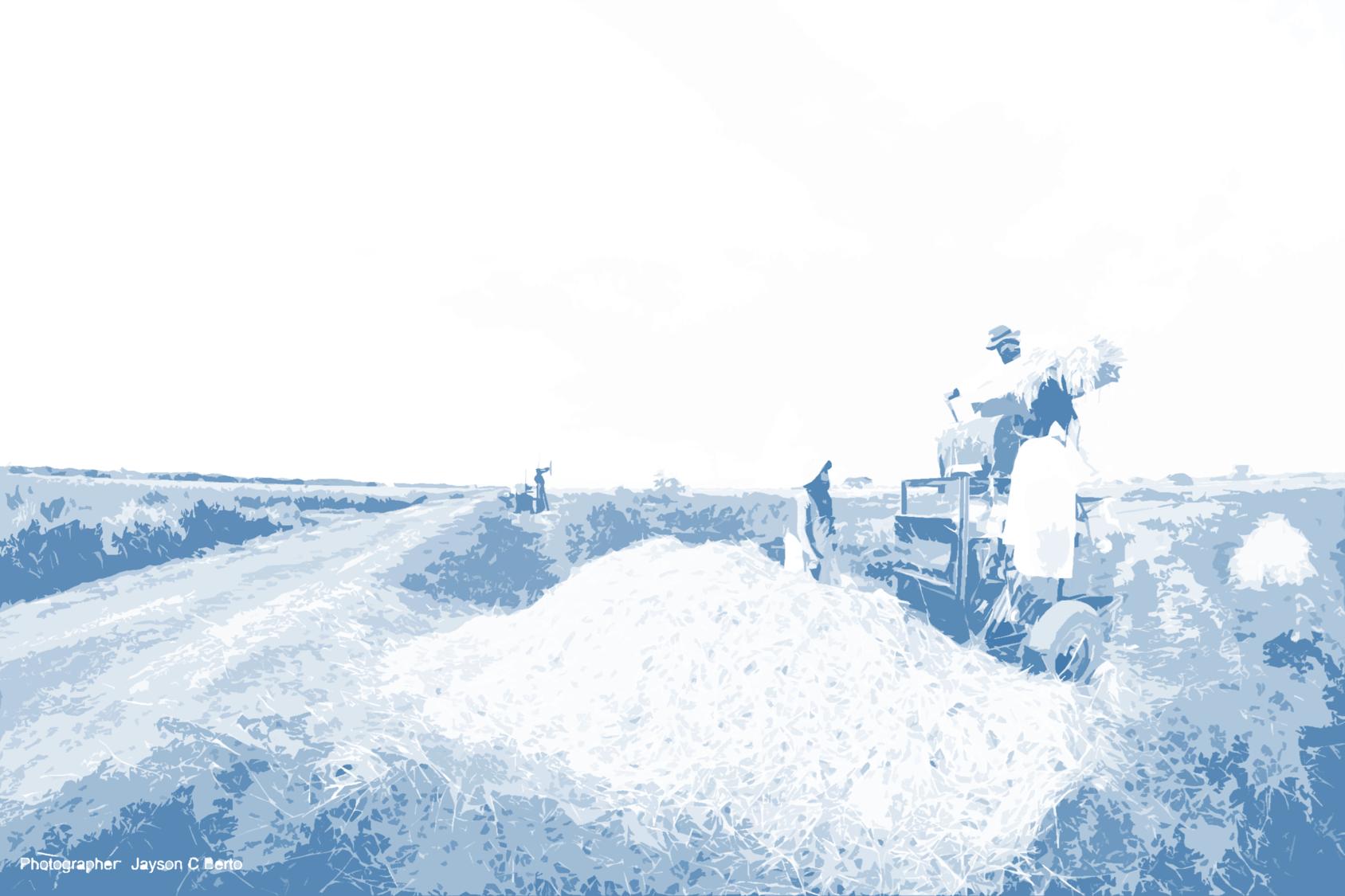DEPARTMENTOFAGRICULTURE



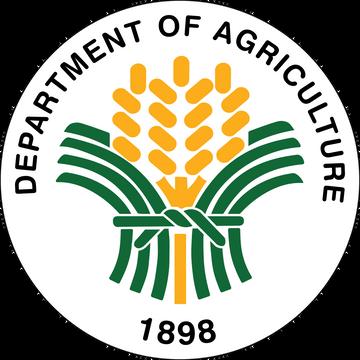

CHAPTER 1:
CHAPTER 2: Restarting Strong: Highlights of DA Accomplishments
2019Snapshot:AccomplishmentsofDARegularPrograms
MajorMilestones:
Introducedthe‘newthinking’foragriculture ImplementedthecomponentprogramsofRCEF
Managed,controlledandcontainedtheASFoutbreak Forgedstrategicpartnershipstopromoteagripreneurship InstitutionalizedEarlyWarningSystemsforimprovedresilience StrengthenedInternationalRelations
CHAPTER 3:
TheEightParadigmstoLevelUpPhilippineAgriculture SalientComponentsoftheDAFY2020AnnualPlan
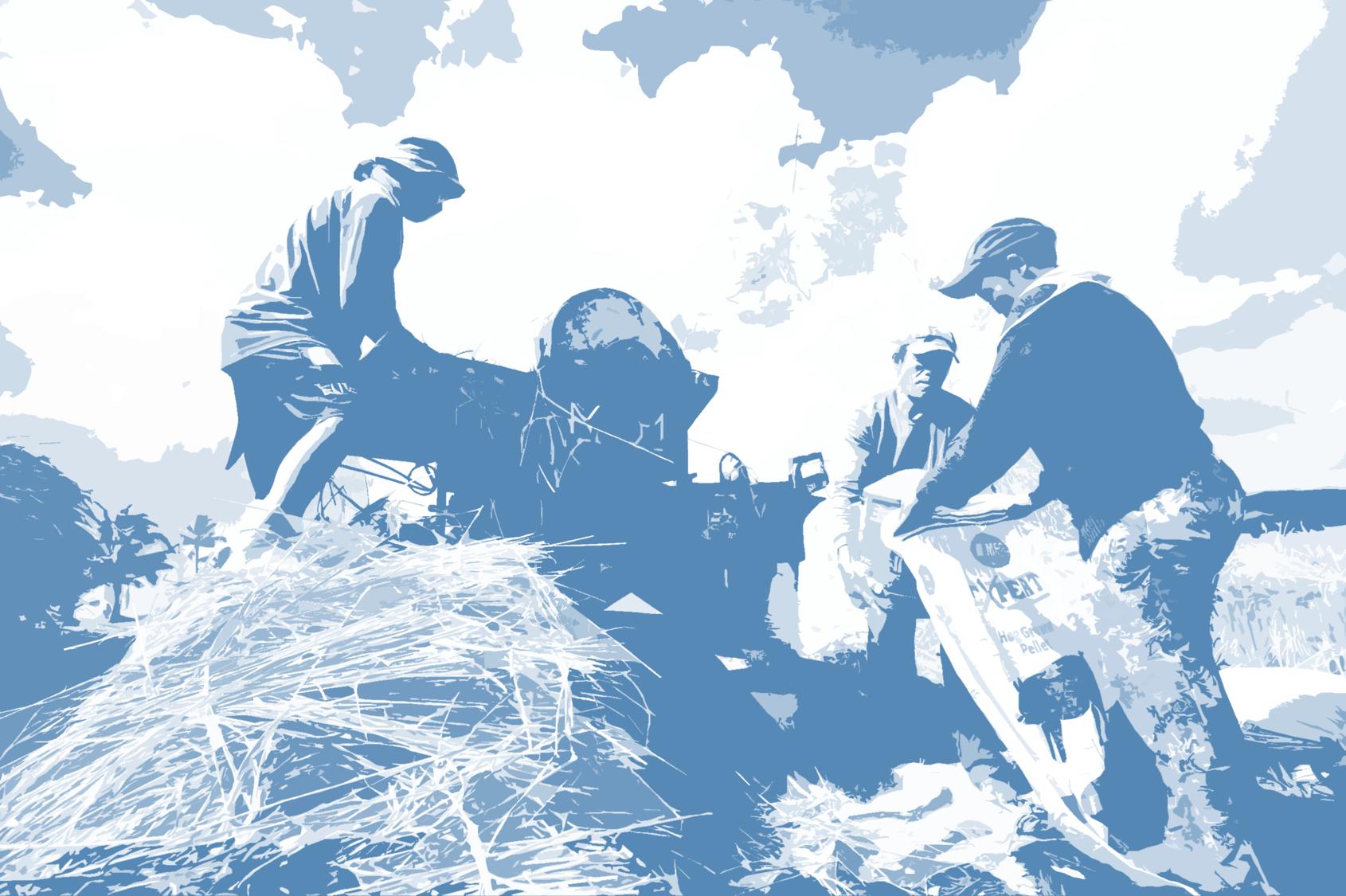
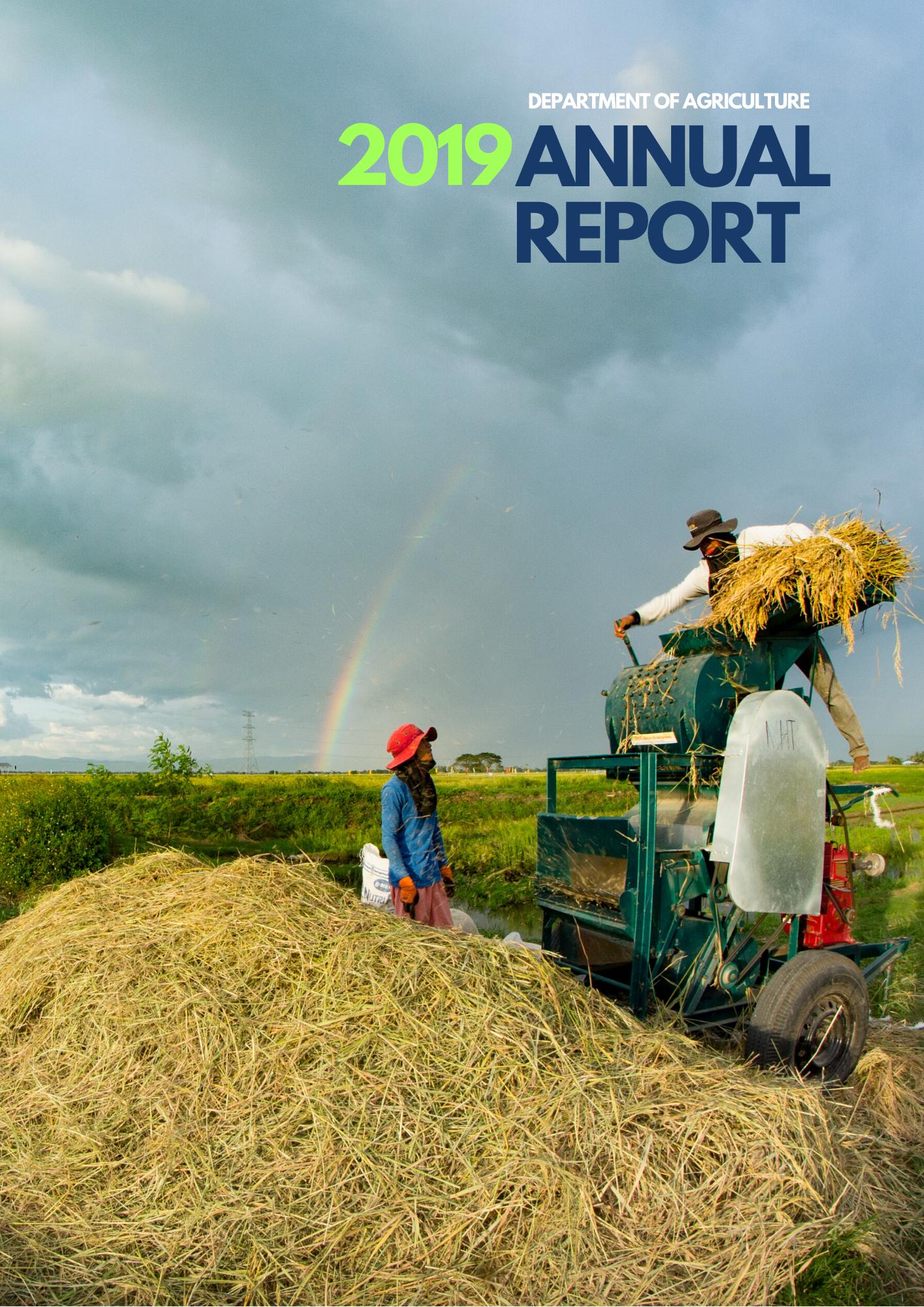 Cover photo courtesy of the Philippine Rice Research Institute (PhilRice)
Cover photo courtesy of the Philippine Rice Research Institute (PhilRice)
The agriculture and fisheries sector continues to soar this 2019 It is evident that our vision of “a food secure Philippines with prosperous farmers and fisherfolk” has been imbibed to the men and women involved in agriculture
According to the Philippine Statistics Authority, the agriculture sector contributed more than P756 billion to the Gross Domestic Product (GDP) while employing almost 10 million Filipinos or 24 3 percent of the country’s labor force this year
These are all accounted for through the collaborative efforts of the Department, Local Government Units (LGUs), State Colleges and Universities (SUCs), private sectors, and sacrifices of the farmers and fisherfolk
This year, the agriculture sector was able to surpass the challenges brought about by the El Nino phenomenon and the disturbance by natural disasters such as powerful typhoons, Tisoy and Ursula. Despite these challenges the agriculture grew by 0 4% in the 4th quarter reflecting our resilience and resolve to rise above any diversity
In the 3rd and last quarters of 2019, the country was badly affected by the African Swine Fever (ASF) which accounted to moderate growth in the livestock sector The Department of Agriculture will continue to commit strict implementation of biosecurity and quarantine protocols to help boost the hog industry
The outcomes of the Rice Competitiveness Enhancement Fund (RCEF), which only started in November 2019 will be reflected in the first semester of 2020 It was able to obligate about P4 28 billion or 42 8% and disbursed P1 10 billion or 11% of the total rice fund as of December 2019
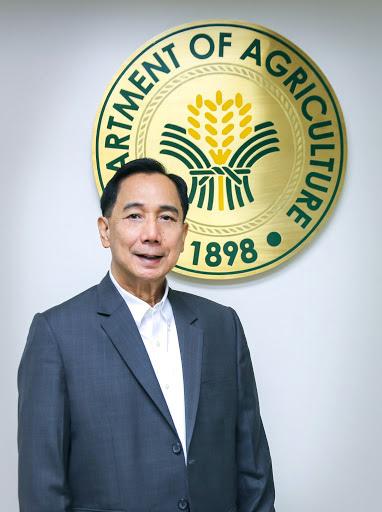
We will continue to properly and efficiently implement the Rice Tariffication Law and help more rice farmers by providing cash assistance and developing a Crop Diversification Strategy for them
We will continue to build on the strong foundation in partnership with the local government units, private sector, farmers’and fishers’ groups, and academe to catapult the entire agriculture sector this year and beyond We will continue to provide farmers and fisherfolk smart, climate-resilient, and advance agriculture.
We hope the agriculture sector will perform much better in 2020 with good planning and proper implementation of new and existing programs.
Maraming Salamat po!
WILLIAM D. DAR, PhD. Secretary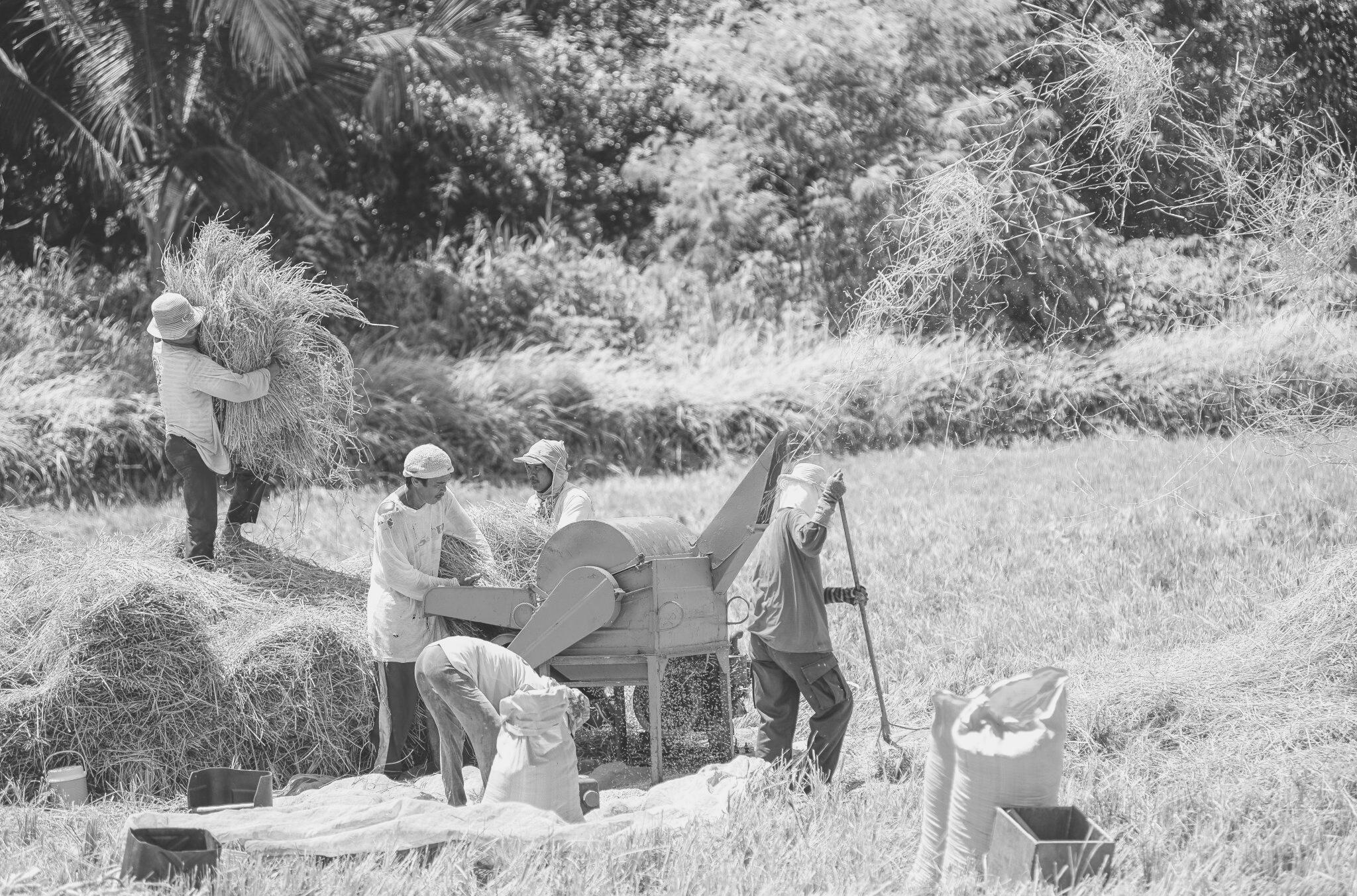


LAYING THE FOUNDATION & SETTING THE DIRECTION FOR AGRICULTURAL TRANSFORMATION



The year 2019 was faced with major challenges such as the high prices of rice and the drop in prices of palay, African
swine fever (ASF) outbreak, fall armyworm infestation, and continued occurrence of extreme weather and natural events that challenged agricultural production and adversely affected the well-being of farmers and fisherfolk
These forces greatly influenced the actions taken by the Department under the leadership of Secretary William Dar Nevertheless, the Department did not lose focus and acknowledged the bigger task at hand which is to transform the A&F sector which has not progressed in years, exhibited a rather lackluster performance and had a meager contribution to the economy and in national development
While playing a crucial role in the national economy and in ensuring food security, farmers and fisherfolk as well as their families are among the most vulnerable, poor and food insecure For decades, engagement in agricultural activities has been associated with being income and food poor making them unable to afford, in a sustained manner, the minimum basic needs for food, health, education, housing and other essential amenities of life
A decisive and urgent call to action was made on Day 1 to turn things around, revive the sector and arrest the sector’s decline to deep abyss and lift the country’s agricultural and fishing communities from vicious cycle of poverty
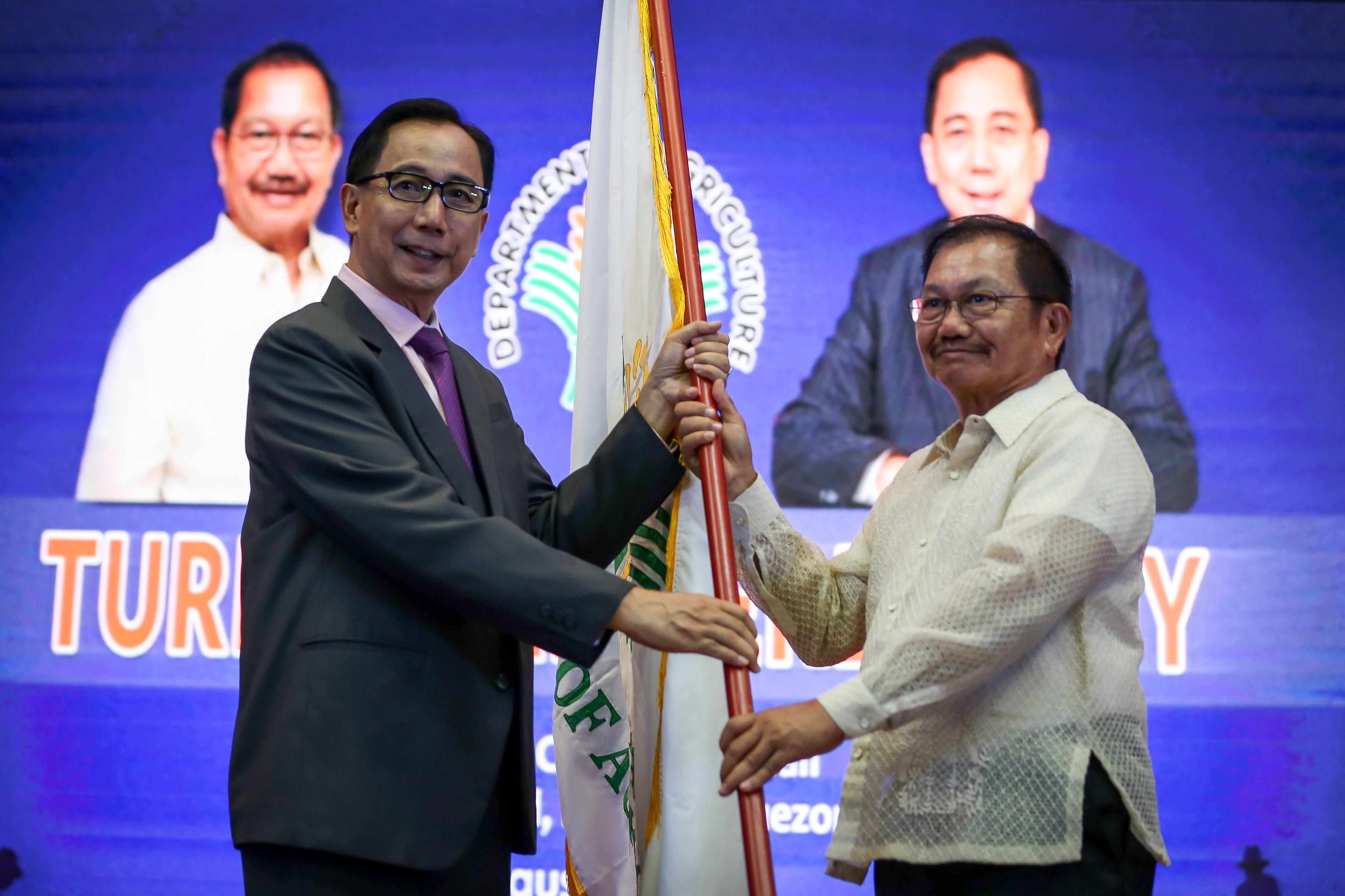 Agriculture Secretary William Dollente Dar receives the Department of Agriculture flag from outgoing Secretary Manny F Piñol during the turn-over ceremony on August 13, 2019 at the Convention Hall of the Bureau of Soils and Water Management in Quezon City
Agriculture Secretary William Dollente Dar receives the Department of Agriculture flag from outgoing Secretary Manny F Piñol during the turn-over ceremony on August 13, 2019 at the Convention Hall of the Bureau of Soils and Water Management in Quezon City
Despite improvements in the food security rankings, the Philippines still lags behind other ASEAN countries such as Malaysia, Thailand, Vietnam and Indonesia in terms of overall food security score Moreover, key economic indicators also show erratic and constrained growth that produced little to no effect in ensuring the well-being and prosperity of farmers and fisherfolk
The country has made remarkable strides in making food available and affordable to every Filipino as manifested in the fifteen-notch improvement in the Philippine’s ranking in the 2019 Global Food Security Index (GFSI)
64th in
out of 113 countries
70th in 2018
79th in 2017
From 15% GDP share in 2001, the agriculture sector only accounted for 9% of the national output in 2019 - the lowest among the three major industry groups.
On the average, the GVA in Agriculture and Fishing only grew by 2 8% from 2001-2019 For the same period, the value of agri-fishery production only managed to grow by 2 0% on the average
Between 2001-2019, the total value of agricultural exports only grew by 7 8% on the average with major growth spurts reaching as high as 32 4% (2011) and contractions as low as 21 6% (2015)
7.8% 2001-2019 average growth in value of agricultural exports

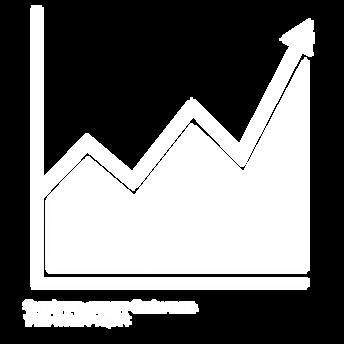
9 1% in 2019
-7.0% in 2018
2019 Top Export Products
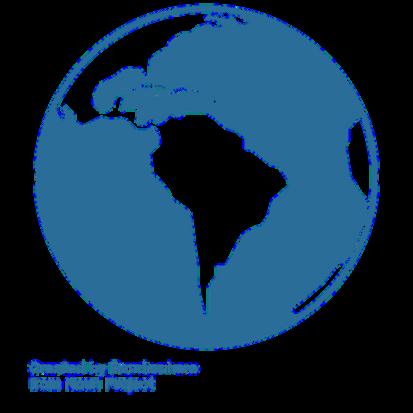
Banana
Coconut oil
Pineapple & products
Tuna
Tobacco
Desiccated coconut Rubber
Food preparation for infant use Copra oil cake
2019 Top Export Destinations
Sevices:
11,740,724
Industry:

5,843,934
Agriculture:
61% 30% 9% 1,783,855
c t i v i t y
Producing paddy rice in Philippine irrigated areas costs PhP12 41/kg while the least cost producers were in Vietnam, with an average of PhP 6.53/kg, only about half that of the Philippines. Also, the Philippines only tallied an annual rice yield per hectare of 9 52 tons/ha - a far cry from Vietnam’s annual yield of 20 59 tons/ha
Cost of producing 1kg of paddy rice
Indonesia
China


Philippines

India
Thailand
Vietnam
Php15.70
Php14.07
Php12.41
Php8 87
Php8 85
Php6 53
Annual yield (tons per hectare)
Vieltnam
20.58
13.56


11 53
10 47
9 51
8 92
While we remain self-sufficient for coconut, sugarcane, cassava, tomato, chicken egg and milkfish, the country’s self-sufficiency ratio (SSR) for staple crops rice and corn only stands at 86.17% and 88.43%, respectively.
While the average daily basic pay for agricultural workers is increasing, it is still significantly lower than what workers in the industry and services sectors are receiving

In PhP at current prices








Sevices: PhP499.75
Industry: PhP41147
Agriculture: PhP237.38
Countrywide, the number of persons who were employed in agriculture in 2019 is around 9 72 million A&F employment share i down to 22 9% in 2019 from a high of 43 4% in 1995
From 2011 onwards, the output per worker in industry and services began to outpace that of agriculture and a wide disparity has also been observed.
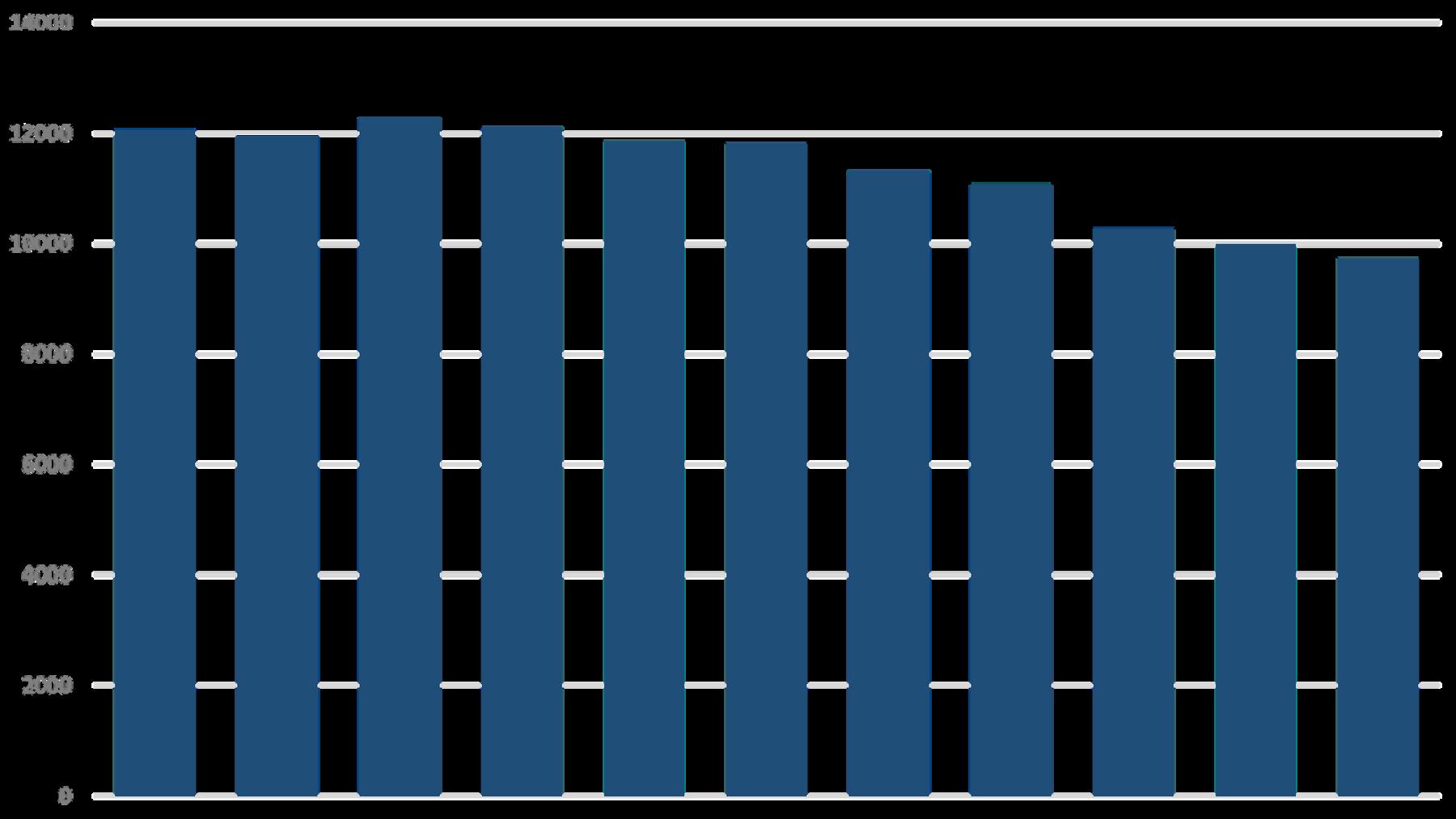




In PhP at constant 2000 prices




Sevices: PhP228,134








Industry: PhP400,567
Agriculture: PhP74,593
I n c r e a s i n g i m p a c t o f c l i m a t e - r e l a t e d d i s a s t e r s



Among major occupation groups, farmers and fisherfolk tallied the lowest average annual family income. Farmers and fisherfolk are also considered as the country’s “poorest of the poor ” posting the highest poverty & subsistence incidences among the basic sectors


PhP163,300
average annual family income of farmers and fisherfolk




Data from 2010-2019 show that on the average, the value of agricultural damage and losses in the Philippines is approximately at Php30 billion, annually Of which, 84% were caused by typhoons
average annual value of agricultural damage & losses

84% are caused by typhoons

The appointment of Secretary Dar came at a time when Philippine agriculture is at the proverbial crossroads of opportunities and challenges The A&F sector inherited by Secretary Dar has been drastically changed by economic and societal landscapes and urgently calls for better, faster, and precise action and response
The A&F sector, for the longest time, has been the “sleeping giant” of the national economy, whose vast potentials remains largely untapped to achieve higher and sustainable growth. In order to contribute its full potentials in the national development efforts, the DA commits to implement a coherent and comprehensive set of strategies, supported by a sound development framework, that will bring Philippine agriculture back to its bearings

Cognizant of the pressing realities besetting the A&F sector as well as existing opportunities for growth and development, Secretary Dar methodically mapped out immediate and long-term strategies to steer the sector back on the development track and further strengthen the foundations of Philippine agriculture
In order to provide a powerful launching pad for synchronized and collective action, Secretary Dar, from the onset, mounted a new vision and objective to inspire and guide the Department, including its various agencies and bureaucracies in the agricultural transformation process with the local government units (LGUs), State Universities and Colleges (SUCs), the private sector, and farmers and fisherfolk themselves, actively taking part.

Built on the new vision of a “food-secure Philippines with prosperous farmers and fisherfolk” and the twin objectives of “masaganang ani at mataas na kita”, the DA aims to achieve three main goals: (1) raise the productivity and incomes of farmers and fisherfolk, (2) generate additional employment in the countryside and (3) produce enough supply of basic food commodities which are affordable and accessible to most Filipinos

The “new thinking” should have for its vision:
A food secure Philippines with prosperous farmers and fisherfolk. Agriculture Secretary WILLIAM D. DAR
For the longest time, focus was heavily put towards increasing food production This strategy did not explicitly recognize the need to raise the income of farmers and fisherfolk and did not mention any direct measure to promote farmers’ welfare with poverty reduction just considered as an afterthought
This new direction and outlook comes with strong conviction to break the obsolete concept that agriculture is merely a food production system and a conscious effort to assert the great potential and power of a thriving A&F sector to create multidimensional and rippling positive impacts not just to the economy but also to the nation’s social fabric
The vision for the future of Philippine agriculture is founded on the belief that only an agricultural growth based on prosperous rural communities can help us maintain food security, and wipe out poverty in our country as embodied in the two-pronged objective While the Department acknowledges its main function of providing food for the nation, a proactive and deliberate stance must also be made to eradicate and break the inter-generational cycles of poverty deeply rooted in rural communities
Multiple pathways must be provided to increase production levels and sustainably move poor, smallholder farmers and fisherfolk out of poverty through tailored and appropriate support Seeking for greater operational coherence, policies and programs for the A&F sector will be systematically sequenced and linked to improve their effectiveness and overall efficiency in reinforcing the desired future aspired for Philippine agriculture
With this twin-track approach, the Department aims to launch an agriculture-driven development that would simultaneously ensure food security and substantially contribute to the government’s povertyreduction efforts.
The DA is working across a range of areas to make sure that Filipino farmers and fisherfolk are wellpositioned for the future This is to ensure that agricultural practices and produce are modern and competitive, and our rural communities continue to thrive in the face of challenges posed by natural and man-made disruptions, local and foreign market conditions, environmental limits, technological change, and changing demographics and consumer preferences.
For most developing countries, agricultural and rural development are considered imperatives for economic and national development Increasing the low incomes of small Filipino farmers and fisherfolk could be the key to leveling up the country’s agriculture sector
This could be done with the use of relevant and innovative technologies, provision of affordable credit, wide adoption of economies of scale through collective action, value-adding, developing markets at the local, national and global level, sustained empowerment and skills development of farmers and fisherfolk, and provision of sustained government budget support augmented by private sector investments Other imperatives and pre-conditions must also be undertaken such as mechanization, development of rural infrastructure including market infrastructure, research and development, development-oriented regulatory and policy support, and climate-smart agriculture
These solutions were tied up and integrated into the eight (8) paradigms to level up Philippine agriculture operationalizing the ‘new thinking’ for agriculture Moreover, these shall put in place the required policies, programs, projects and funding that are instrumental in attaining a food-secure Philippines, and in doubling the incomes of small farmers and fisherfolk in the next five (5) years These development strategies were adopted and mainstreamed within the DA system with the aim of bringing the A&F sector along a path toward a higher growth rate and employment to ensure higher level of incomes for Filipino farmers and fisherfolk.
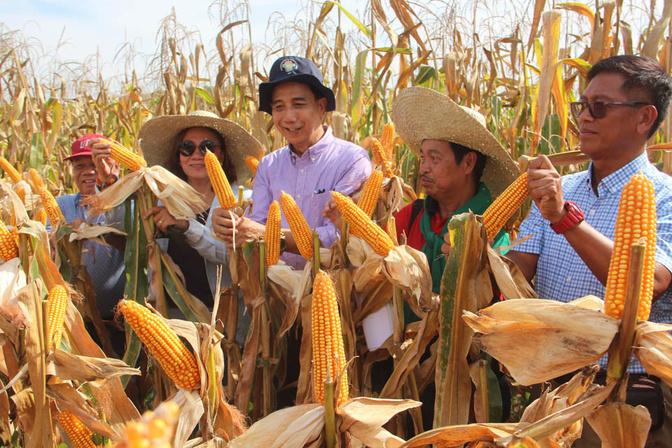
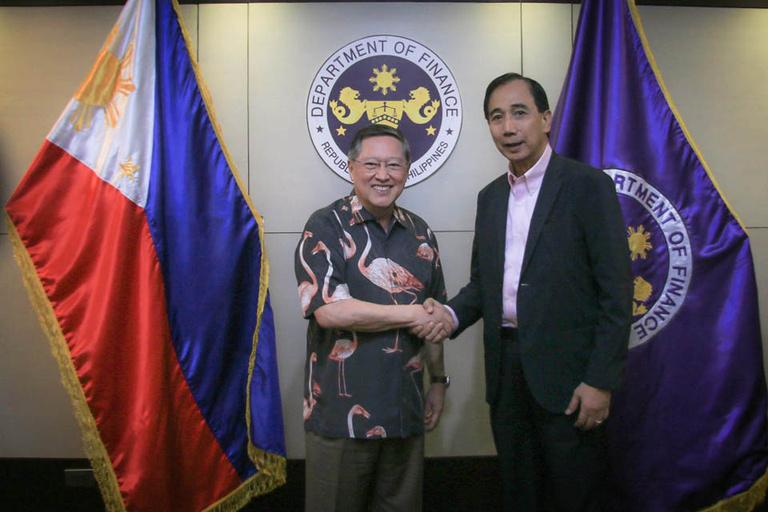

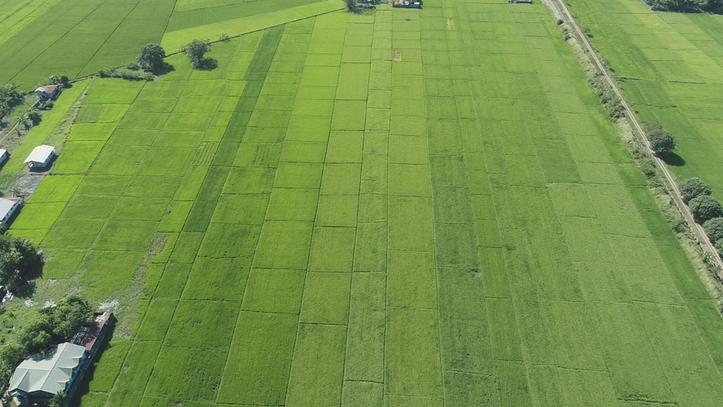
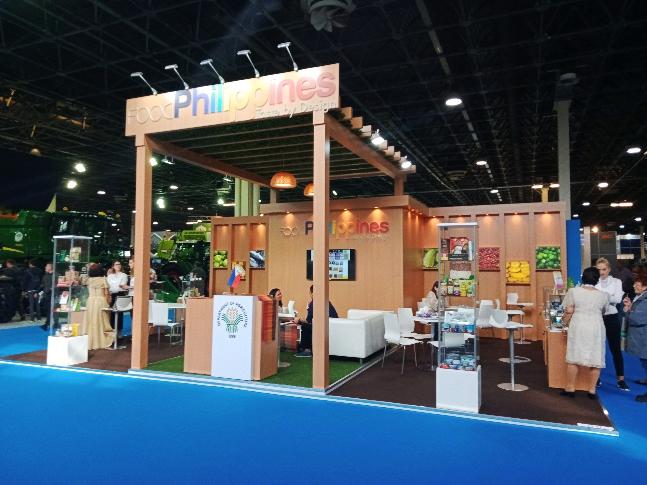

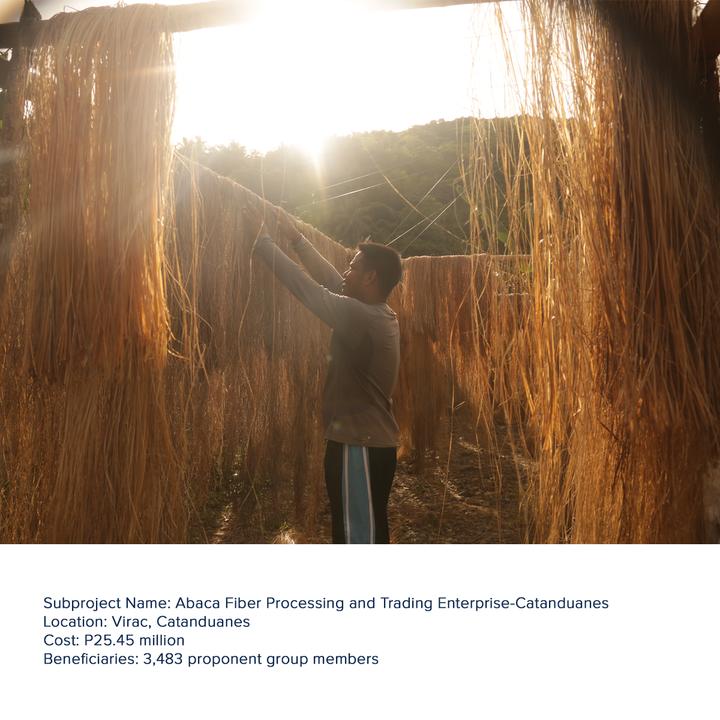
Through its many interventions, the DA employs a whole-of-society approach to ensure that farming and fishing communities are empowered and provided with much needed support that will pave the way for the creation of more and better opportunities to rise above poverty, and live decent and prosperous lives
A more detailed discussion of the eight (8) paradigms and its mainstreaming in the A&F sector development framework is presented in the succeeding chapters
15-point priority agenda for the first 100 days
The Department, under its new leadership, has set a 15-point priority agenda alongside the eight (8) paradigms, which mirrors the urgent initiatives that needs to be implemented given the pressing issues of the sector, and immediate reforms that must transpire that will lay the foundation and set the course for bigger and more impactful reforms in the long term

These served as guideposts and beacons to start what can be considered a newfangled attempt to take the country’s A&F sector out of the doldrums
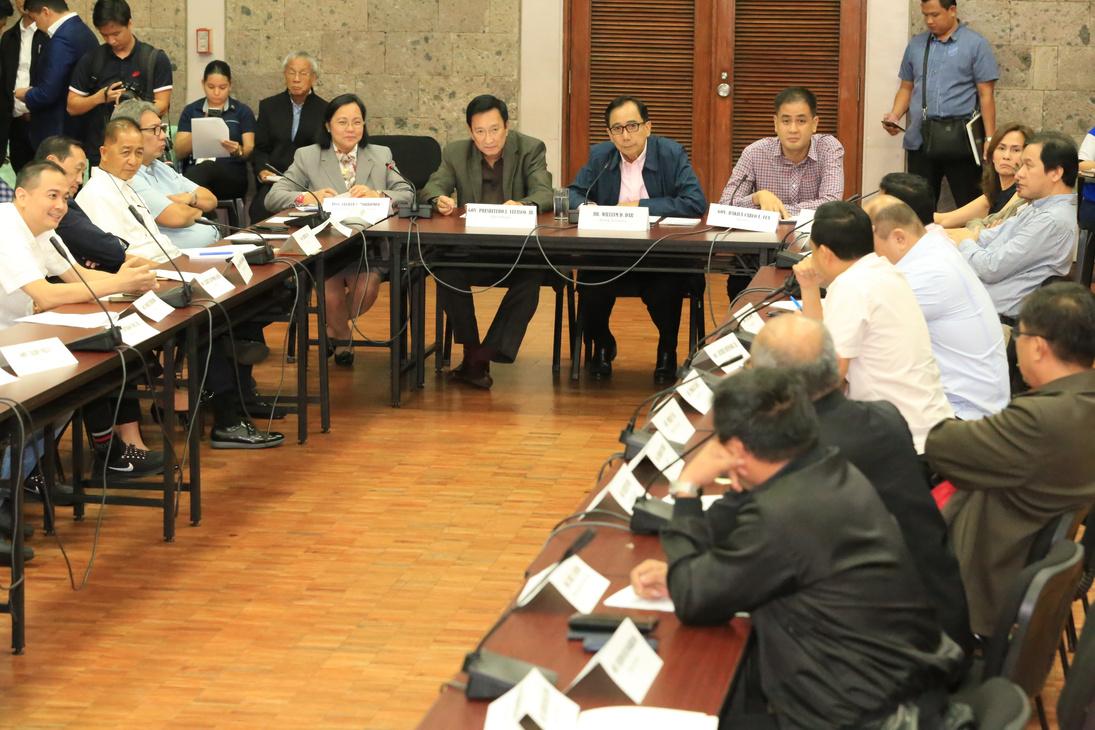





1 I n t r o d u c e t h e “ N e w P a r a d i g m ” f o r t h e d e v e l o p m e n t o f t h e a g r i c u l t u r a l s e c t o r

2 E n s u r e t h e p r o p e r a n d e f f i c i e n t i m p l e m e n t a t i o n o f t h e R i c e T a r i f f i c a t i o n L a w
3 C r a f t a n d i m p l e m e n t a “ C r o p D i v e r s i f i c a t i o n S t r a t e g y ”







4 C r a f t a n d i m p l e m e n t a c a s h a s s i s t a n c e p r o g r a m f o r r i c e f a r m e r s
5 E n h a n c e s k i l l s o f s m a l l f a r m e r s & f i s h e r f o l k , w i t h e m p h a s i s o n e n t r e p r e n e u r s h i p
6 S t r o n g l y i m p l e m e n t c l i m a t e c h a n g e a n d d i s a s t e r r i s k r e d u c t i o n p r o g r a m s i n a g r i c u l t u r e 7

A s s i s t t h e B a n g s a m o r o
A u t o n o m o u s R e g i o n i n M u s l i m
M i n d a n a o ( B A R M M ) i n
s t r e n g t h e n i n g i t s a g r i c u l t u r e
a n d f i s h e r y p r o g r a m s
8 S t r e n g t h e n t h e o r g a n i z a t i o n a l s t r u c t u r e o f t h e D e p a r t m e n t
9 R e v i e w a n d r e o r i e n t e x i s t i n g D A p r o g r a m s a n d p r o j e c t s t o w a r d i n c r e a s i n g t h e p r o d u c t i v i t y
10 R e s h a p e a n d r e p r o g r a m t h e b u d g e t o f D A f o r 2 0 2 0
11 E n h a n c e p a r t n e r s h i p w i t h L G U s a n d t h e p r i v a t e s e c t o r
12 C o o r d i n a t e / c o l l a b o r a t e w i t h t h e D e p a r t m e n t o f T r a d e a n d I n d u s t r y ( D T I ) o n p r i c e s t a b i l i z a t i o n a n d c o m p l e m e n t a t i o n o f a g r i c u l t u r a l p r o d u c t s
13 C o n d u c t a “ F o o d S u m m i t ” w i t h k e y s t a k e h o l d e r s

14 S u s t a i n a m a s s i v e i n f o r m a t i o n a n d c o m m u n i c a t i o n c a m p a i g n , h i g h l i g h t i n g c o u n t r y s i d e h e r o e s
15 R e v i e w r e s t r i c t i v e a n d c o n s t r i c t i v e p o l i c i e s o n a g r i c u l t u r e a n d f i s h e r i e s
By all accounts, the first five (5) months of the new administration had been a very challenging period for Philippine agriculture And in such a critical time, the leadership of Secretary Dar provided much-needed direction and focus that allowed the Department to turn these difficult situations into opportunities by developing new and retooled programs and strategies to better respond to the demands of the sector given the status quo
Proactive, systematized coordination through formal structures and coalitions of support were advocated and widely prompted to achieve synergies that create multiplier effects Further, innovative approaches were employed to break the barriers for effective implementation of DA programs and projects and easy cross-sectoral collaboration such as institutional bottlenecks, resource constraints and capacity gaps, among others
All units in the DA system, acting in collaborative partnership with key stakeholders, were inspired and determined to take these transformative steps which are needed to create a positive shift in the development track of the A&F sector Through collective and decisive action, these strategies yielded positive results for the agency and the sector.

Anchored on the vision and aspirations of the Filipino people for a matatag, maginhawa at panatag na buhay
and the inequality-reducing transformation pillar of the Philippine Development Plan (PDP) 2017-2022, the Department of Agriculture remains committed in ensuring that farming and fishing communities are empowered and are provided with the much needed support and interventions that will expand and pave the way for more opportunities to help them rise above poverty while recognizing their valuable role in helping the Department fulfill its mandate to produce sufficient, safe, nutritious, accessible and affordable food for every Filipino
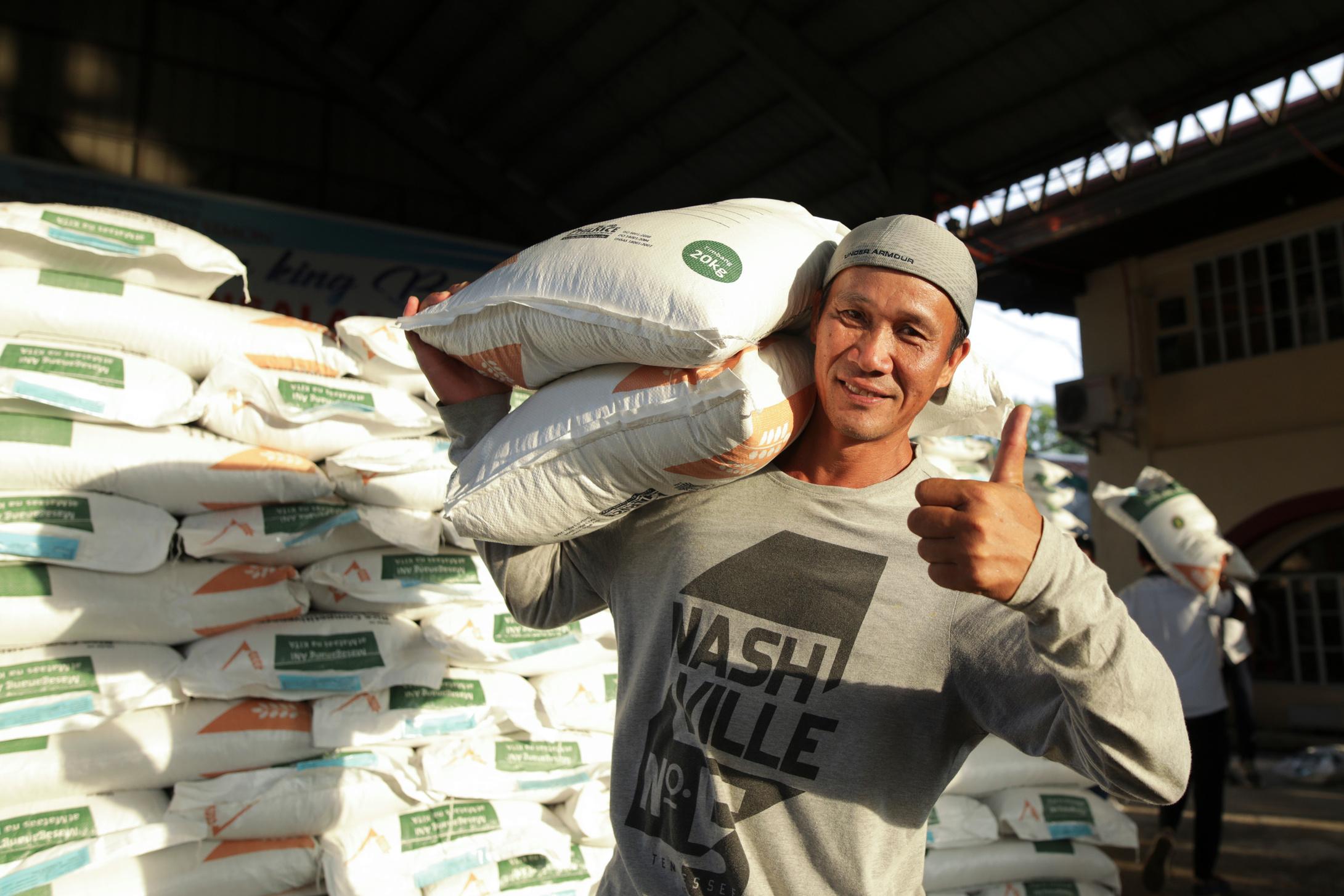
The Department continued to provide a wide-range of interventions and support services to the A&F sector under its various Program Expenditure Classification (PREXC) Programs and Sub-programs in pursuit of its twin objectives of “masaganang ani at mataas na kita ”
On top of the Department’s regular programs, major milestones were also accomplished by the DA in line with the realization the 15-point priority agenda and institutionalization the eight paradigms, with Secretary Dar at the helm





The Department through its various programs, projects and activities delivered production, marketing and extension support, distributed and constructed appropriate farm and fishery machinery and facilities, and provided policy and regulatory support, among others



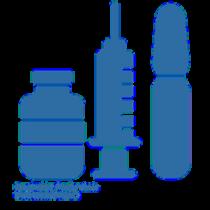


These interventions are centered on ensuring competitiveness enhancement in the sector and providing farmers and fishefolk with more and diversified livelihood and income opportunities
To improve agriculture and fishery productivity, the Department promotes the use of latest production technologies, such as the utilization of high-yielding seed varieties, expansion into new and innovative marketing schemes, and strengthening of the extension system that will contribute to better livelihood opportunities and income
In 2019, about 368,000 individuals and 8,615 farmer groups/associations were provided with production, marketing, and extension/ training support services by the DA nationwide
LEGEND: Individuals Groups







The availability of critical infrastructure and improving the level of mechanization in farming are imperatives to increasing agricultural productivity This is one of the major endeavors of the DA so that Philippine agriculture attains a level of competitiveness comparable to that of our Asian neighbors.
On irrigation, 1,946 groups and 63 individuals benefited from 2,544 irrigation projects constructed, installed and rehabilitated which generated and restored 10,690 hectares of service area
On agricultural equipment and facilities, 25,262 production and post-harvest machineries and equipment were distributed, and 4,956 production and post-harvest facilities were established, constructed and maintained by the DA in 2019 through its various banner programs These interventions benefited a total of 8,829 groups/associations
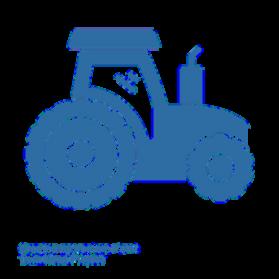
On farm-to-market roads (FMR), DA RFOs were able to validate 1,171 FMR sub-projects for construction and rehabilitation with a total length of 850.63 kilometers. Moreover, 760 FMRs

2019 were successfully monitored
Building a competitive A&F sector also necessitates having a sound policy and regulatory environment that will contribute to the promotion of food security and increasing the incomes of farmers and fisherfolk The Department, in consultation with relevant stakeholders, supported and endorsed 44 policies for approval, and issued and disseminated three (3) policies in support to the enhanced competitiveness, modernization and systematic integration of the entire agri-fishery value chain.
The Department, through the Policy Research Service (PRS), initiated, motu proprio, a preliminary investigation on the application of general safeguard measures on the importation of rice from various countries in September 2019 Pursuant to RA No 8800 or the Safeguard Measures Act, the action was introduced due to the influx of imported rice that threatens to cause serious injury to the local rice industry and producers The investigation, however, was terminated on October 2019 when the government opted to provide financial assistance to rice farmers instead of imposing general safeguards.



Moreover, technical inputs were provided on the following: (i) Implementing Rules and Regulations (IRR) of Republic Act No 11203 or the RTL; (ii) proposed amendments to RA 8800 or the Safeguard Measures Act; (iii) drafting of the IRR of RA 11321 or the Sagip Saka Act of 2019, IRR of RA 11293 or the Philippine Innovation Act, and IRR of RA 11037 or the Masustansyang Pagkain para sa Batang Pilipino Act;




(iv) establishment of Philippine Fishing Fleet Modernization Program; (v) establishment of National Economic Decentralization Plan; (vi) rehabilitation and restoration of Manila Bay, and (vii) measures to institutionalize food donations, among others
The Department’s regulatory agencies continue to carry out critical services to ensure food safety from the production process, up to its processing, labeling, distribution, and sale, including those that enter the country Regulatory activities are likewise being undertaken to comply with international standards and regulations of trading partners
In 2019, a total of 3,045,711 regulatory documents were issued by BAI, BPI, and the regulatory units of RFOs Of these, 111,114 were Sanitary and Phytosanitary (SPS) clearance applications Due to the implementation of strict quarantine protocols and improved disease surveillance and monitoring activities, the country maintained its disease-free status for Foot and Mouth Disease (FMD) and Avian influenza (AI)
A total of eight (8) Food Safety Standards and 22 Quality Standards were developed by BAFS to ensure consumer safety and to promote a competitive A&F sector
Control
Percentage of applications for quarantine and sanitary and phytosanitary (SPS) clearance/certificate processed within one day:
for


and sanitary and phytosanitary (SPS) clearance/certificate processed within one day
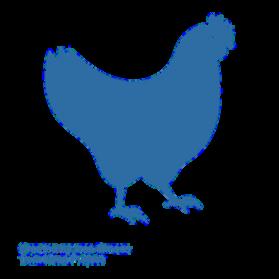

*No recorded outbreaks in 2019
The DA also implements high-impact flagship projects such as the Special Area for Agricultural Development (SAAD) and the Philippine Rural Development Project (PRDP), among others
The SAAD Program, which now covers 30 of the country’s poorest provinces, intends to alleviate poverty through increased food production and productivity by providing the appropriate technology, financing, marketing and other support services in order to make the farmers and fisherfolk productive and profitable In 2019, a total of 25,926 individual farmers and fisherfolk, and 670 associations benefited from the various interventions of the program nationwide with a total fund allocation of Php1 07 billion
Under the PRDP, over 89,000 households benefited from the 90 completed rural infrastructure projects in 2019 Further, 59,802 individuals from 400 proponent groups benefited from the 342 completed rural enterprise projects In 2019, the project received a total of Php2 22 billion in funding for the implementation of its rural infrastructure and rural enterprise projects The PRDP is a World Bank-assisted project designed to establish the government platform for a modern, climate-smart and market-oriented A&F sector through the provision of key infrastructure, facilities, technology, and information that will raise incomes, productivity, and competitiveness in the countryside

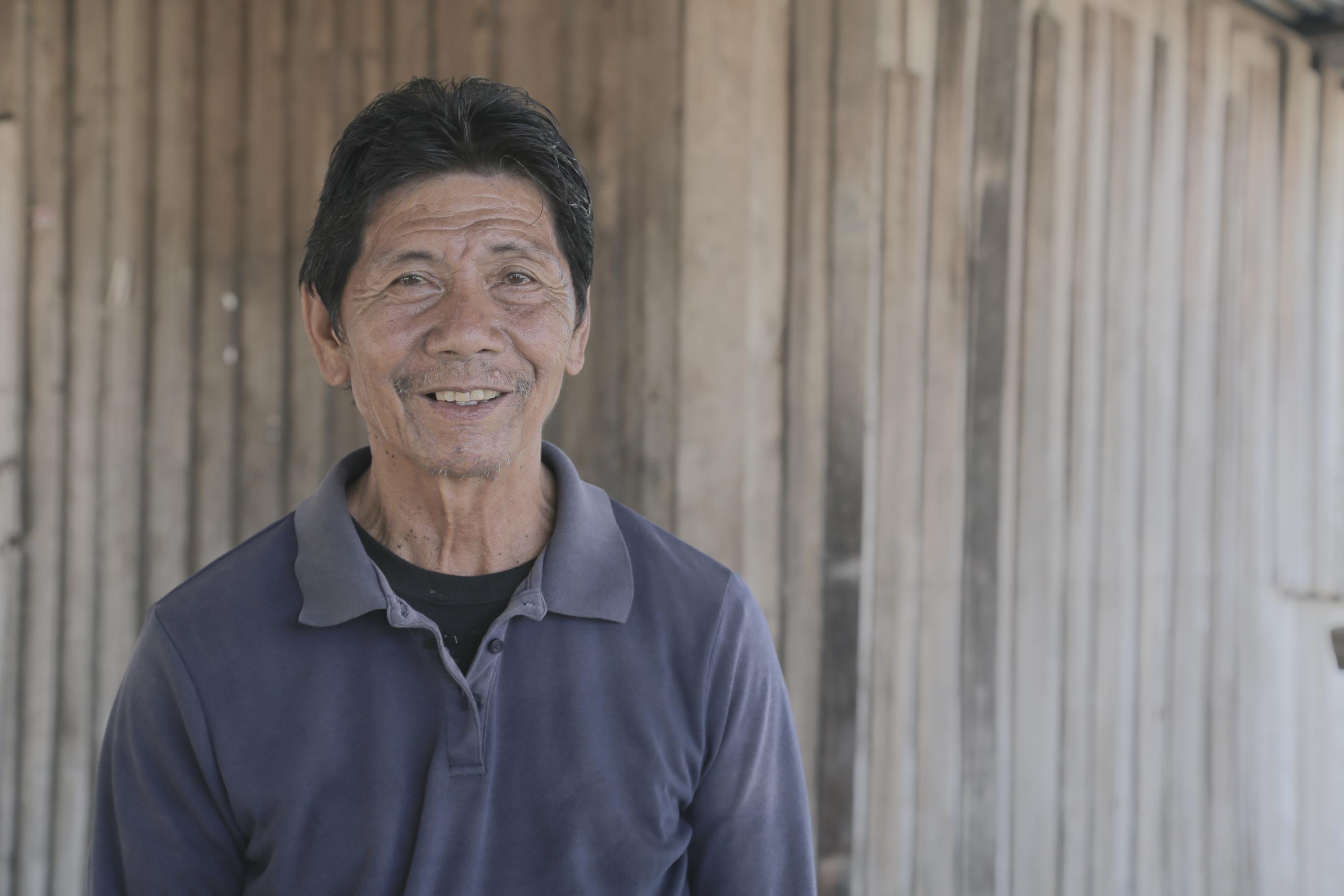
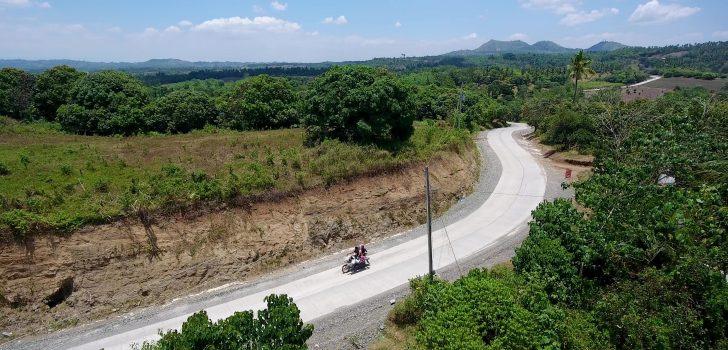


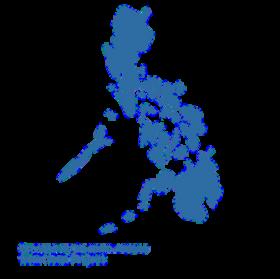




For the first time in decades we can finally transport our crops with ease and without delay. We are inspired to improve farming and expand our farms.
Even buyers, who shy away from our farms before because of the it was all bumpy and muddy during rainy days, are now flocking here, waiting for our harvest of cardava banana and vegetables. Everything is much better now. We have increased our production and income. We now have bigger savings, too.
1. Introduced the ‘new thinking’ for agriculture
The ‘new thinking’ for agriculture was launched and adopted across the entire DA system It became the central element of the operations of the DA as well as its messaging and branding efforts This laid the groundwork for agri-fishery modernization and industrialization towards the attainment of the overarching objectives of “masaganang ani at mataas na kita ”
The eight (8) paradigms provided alignment, synergy and coherence in the Department’s performance of its various mandates Imperative to this initial success is the commitment and support from all the agencies under the Department, private sector and LGUs This renewed and strengthened partnership encouraged more actors and stakeholders to support the Department's vision of a food secure Philippines with prosperous farmers and fisherfolk.
In line with this, the Department spearheaded the conduct of the 1st National Food Security Summit on October 29-30, 2019 which was participated by LGUs, SUCs, and the private sector The activity established a platform for collaborative action and to solicit substantial support at the local level to rally behind DA in pushing forward and actualizing the 'new thinking' for agriculture
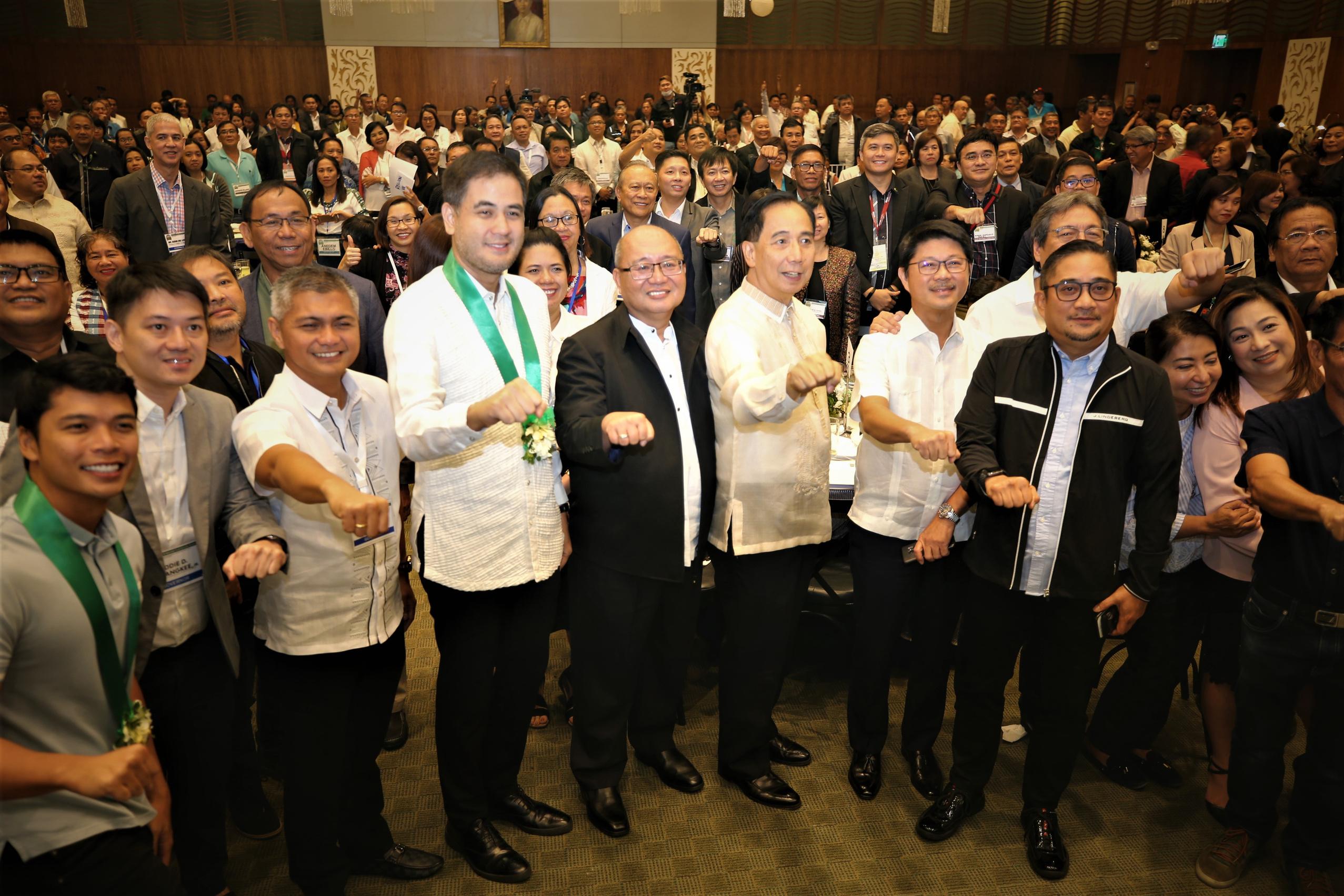
Forty provincial governors pledged their support to the new paradigm adopted by the DA leadership and the vision which was laid down for the sector As partners of the DA, the Local Chief Executives (LCEs) committed to serve as “Food Security Czars” to implement their respective agricultural and fishery projects. In the proposed set-up, DA sees the LCE’s role as the primary “rowers” of the agricultural development process in their local communities while the Department “steers” the course to a modernized, industrialized, sustainable, and market-driven Philippine agriculture and fishery sector
During the two-day event, DA actively enlisted the support of LGU officials, the academe and private sector groups in addressing the various issues and challenges currently faced by the sector such as the the falling prices of palay and copra, and the African Swine Fever outbreak, among others The summit also sought to discuss the effects and how to maximize the benefits of the RTL



30%
This component, which is implemented by the Philippine Rice Research Institute (PhilRice), aims to increase the adoption of certified inbred seeds and integrated crop management through the following: (1) Promotion and distribution of certified inbred rice seeds; (2) Mobilization and strengthening of local seed production; and (3) Support to variety development
This component, which is implemented by the Agricultural Training Institute (ATI) in partnership with PhilMech, PhilRice, and TESDA, intends to provide extension services that will enhance the capabilities of Rice Fund beneficiaries in using yield-enhancing production technologies through the following: (1) Design and conduct of training programs, enterprise development assistance and communication support services; (2) Establishment and strengthening capacities of learning sites and farm schools; and (3) Implementation of a scholarship program/TESDAaccredited training programs.
This component aims to make direct lending program available in the form of a credit facility with minimal interest rates and minimum collateral requirements to rice farmers and cooperatives, to be managed equally by the Land Bank of the Philippines (LBP) and the Development Bank of the Philippines (DBP)
Rice farm machinery and equipment









Kalinga
Ifugao
Pangasinan
Ilocos Norte La Union Ilocos Sur
Isabela

Cagayan
Nueva Vizcaya
Quirino
Nueva Ecija
Tarlac
Pampanga
Bulacan
Bataan
Aurora
Zambales
Laguna
Cavite
Quezon
Oriental Mindoro
Palawan
Occidental Mindoro
Camarines Sur
Albay
Sorsogon
Masbate
Negros Occidental Iloilo
Capiz
Antique
Aklan
Negros Oriental
Bohol
Leyte
Biliran
Southern Leyte
Samar
Zamboanga del Sur
Zamboanga Sibugay
Bukidnon
Misamis Occidental
Lanao del Norte
Misamis Oriental
Davao Oriental
Davao del Sur
Davao del Norte

Compostela Valley
North Cotabato
Sultan Kudarat
South Cotabato
Sarangani
Agusan del Norte
Surigao del Sur
Agusan del Sur
Maguindanao
Lanao del Sur
In 2019, RCEF was able to serve 392,603 individual rice farmers and rice industry stakeholders, and 633 FCAs Each component, on the other hand, was able to accomplish the following:
The allocation for the seed component was released in the second semester of 2019 (Php2 0 billion in July and Php1 0 billion in September) As of December 31, 2019, PhilRice has distributed 705,165 bags (20kg/bag) of inbred rice seeds to 362,288 farmer beneficiaries covering 471 municipalities Eligible rice farmers under the program will receive certified inbred seeds for two (2) consecutive cropping seasons
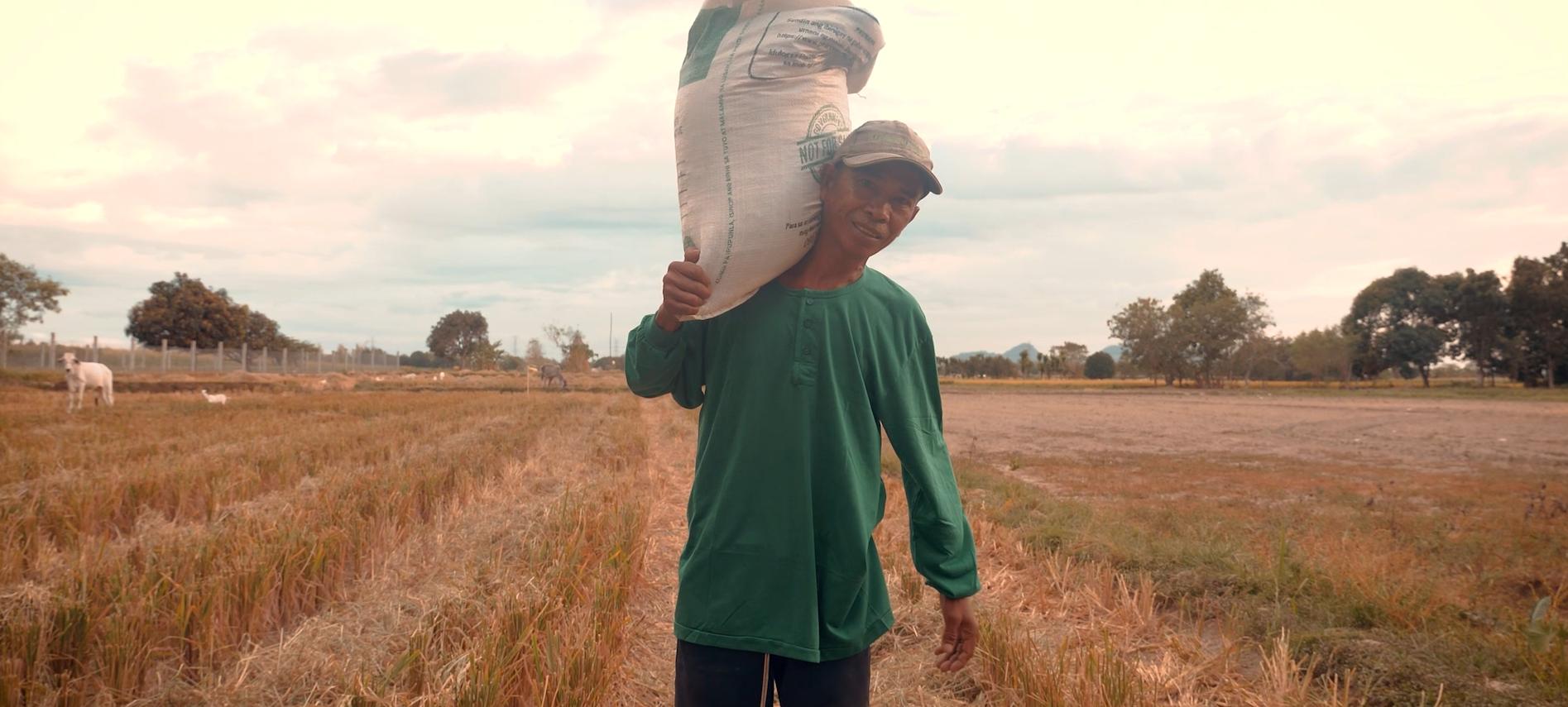

Ang nabigay po sa akin ng DA ay binhi ng palay. Natuwa naman po ako kasi binigay po ito ng libre. Kesa bibilhin ko pa po ‘yun, masakit po sa bulsa kung minsan dahil mahal po ‘yun eh. Salamat po sa binigay na binhi ng pamahalaan at tulong sa aming mga magsasaka. Maraming salamat po.
 Distribution of certified inbred seeds to rice farmers under RCEF in Muñoz, Nueva Ecija
Distribution of certified inbred seeds to rice farmers under RCEF in Muñoz, Nueva Ecija
Starting from the release of the Php1 0 billion allocation for rice extension activities in July 2019, the ATI and other component agencies were able to train a total of 136 specialists, 2,759 trainers and 10,770 farmers in the use of yield-enhancing technologies in rice production


In addition, 16,245 technical and vocational scholarship slots, or roughly 27% of the target, were already availed by farmers The courses offered include regular Farmer Field School, Rice Machinery Operations, Solar Powered Irrigation System (SPIS) Operation and Maintenance, Rice Harvesting and Threshing Machinery and Equipment Operation, Small Engine System Servicing, and Electrical Installation and Maintenance, among others
ATI utilized a total of 26 accredited learning sites to capacitate farmer beneficiaries under the Farmer Field Schools A total of 17 learning sites are expected to be accredited in 2020
Under ERCA, Php1 0 billion has been released to LBP and DBP in December 2019 Of this amount, a total of Php444 1 million zero-interest and non-collateral loan releases were granted to 405 farmers and nine (9) organization borrowers nationwide ERCA is a credit program for rice farmers registered in the RSBSA as well as DA accredited cooperatives with rice farmers as members

Nung last cropping season po namin, na-confine po yung tatay ko.
Pagkatapos niya pong ma-confine, sumunod naman po yung kapatid ko na na operahan naman sa puso. May nag-encourage po sa akin na bumisita po doon sa Landbank sa Dagupan.
Nag-apply po kami at sa awa po ng

Diyos ay napagbigyan naman po yung request naming na makapag-loan. Ang nakuha ko pong equivalent nun ay Php81,200. Last month, nakatanggap naman po yung tatay ko ng Php5,000 na cash assistance galing po sa DA. Malaking tulong po yung binigay po ng
DA sa amin kasi pinangbili po naming ‘yun ng mga gagamitin sa bukid.
First batch of Rice Focal Persons trained under the Rice Specialists’ Training Course under RCEF in the province of Nueva Ecija Participants during the Farmers' Forum and Training Induction Program spearheaded by TESDA in Ormoc City Analyn FloresThe RCEF mechanization component received a total of Php5 0 billion in 2019 with the first tranche (Php2 0 billion) released in July and the second tranche (Php3 0 billion) issued in September In 2019, PHilMech was able to evaluate 2,571 potential FCA recipients Of these, 624 FCAs have already signed a Memorandum of Agreement (MOA) and the procurement of 2,938 units of machinery and equipment is already ongoing Moreover, a total of 744 additional FCAs already qualified under the program’s 2019 second tranche funds Under a grant-in-kind scheme, technologies available for qualified FCA beneficiaries include agricultural tractors, farm tillers, rice seeders, rice transplanters, rice harvesters, rice reapers, rice threshers, mechanical rice dryers, rice mills, irrigation pumps and small solar irrigation, among others
Pursuant to the directive of President Rodrigo Duterte in November 2019, the Department was tasked to lead the implementation of the Rice Farmers Financial Assistance (RFFA) Program The program, in partnership with LBP and DBP, will provide rice farmers tilling 0 5 to 2 0 hectares of farmland with Php5,000 cash assistance which they can use for livelihood projects and augment losses in income incurred due to the falling prices of palay. The Department launched the RFFA Program in Pangasinan on December 23, 2019 A total of 500 farmers of the Municipality of Mangatarem in Pangasinan received cash cards released by the LBP amounting to Php2 5 million In the entire province of Pangasinan, a total of 87,000 rice farmers will receive Land Bank cash cards, equivalent to Php435 million
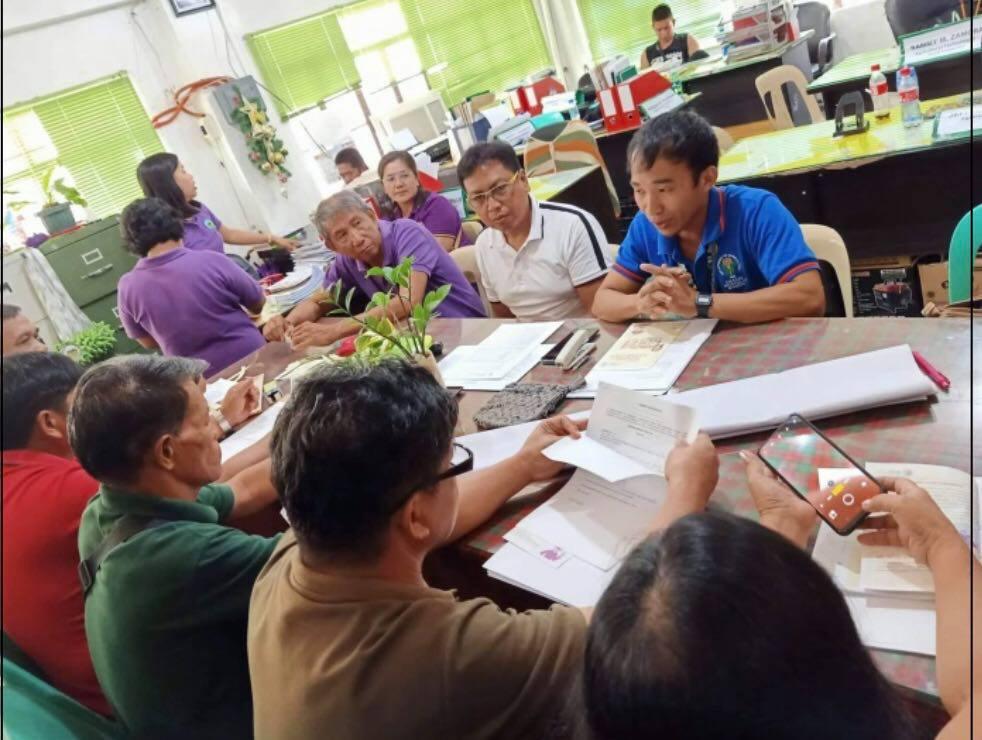
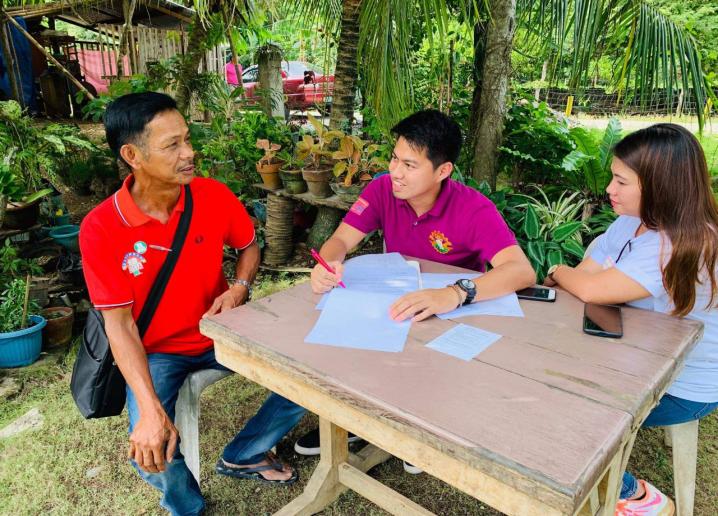
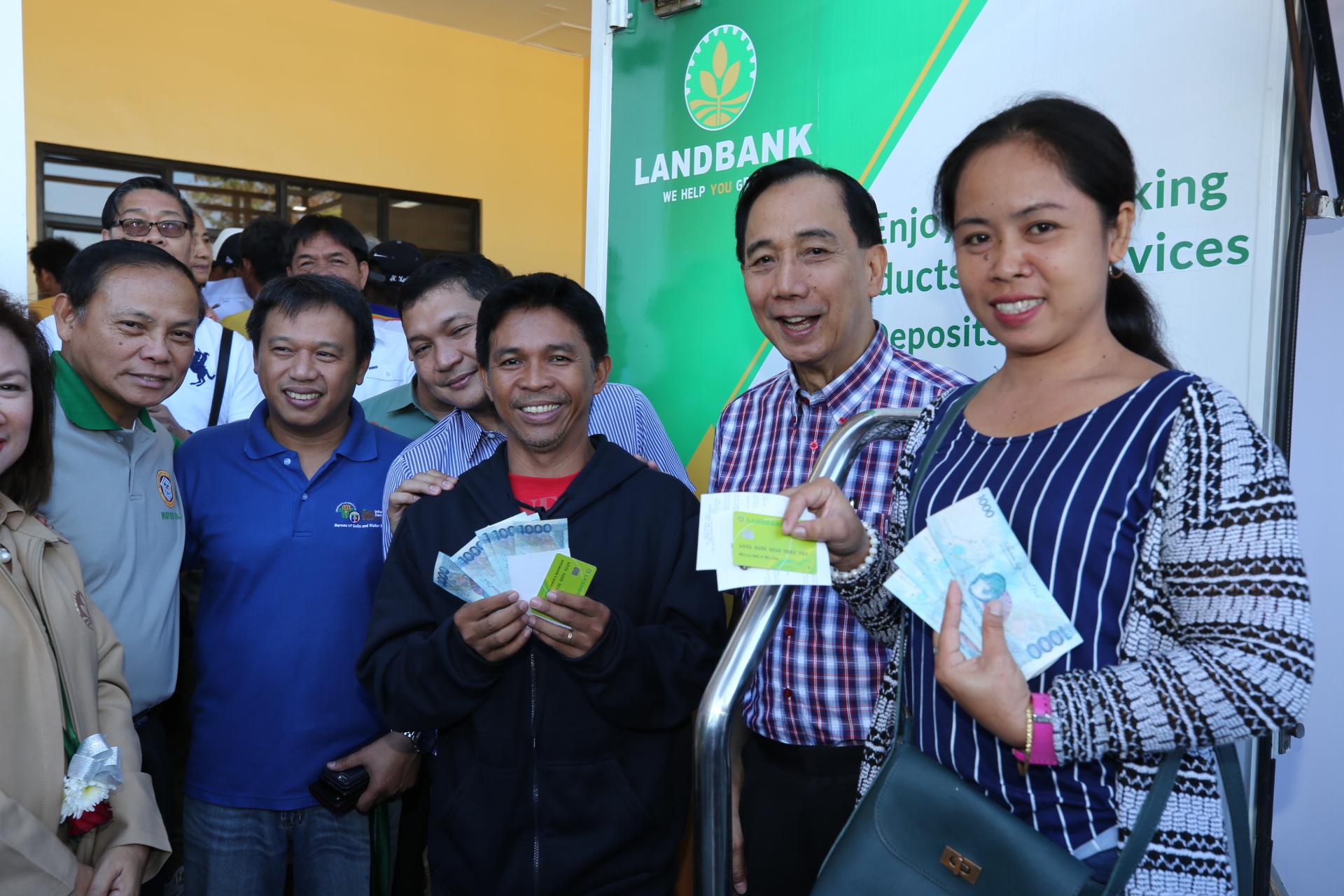
The DA will be releasing a total of Php3 billion to the first 33 rice-producing provinces and qualified farmers selected based on a comparative price analysis that considered the average marketable surplus and profit gains/losses in those provinces The RFFA forms part of the immediate interventions set up by the Department to cushion rice farmers during the transition phase of the Rice Tariffication Law (RTL) implementation
Using the existing RFFA Program as a model, the cash assistance program will be expanded once the excess funds from tarriff collections becomes available in 2020 RA 11203 provides for financial assistance for rice farmers to be sourced from the tariff collection in excess of the Php10 billion RCEF
The program, which is administered by the Agricultural Credit Policy Council (ACPC) and the Development Bank of the Philippines (DBP), is another credit facility that provides working capital for farmer cooperatives and associations to buy palay directly from farmers, and process and market the rice to institutional buyers Eligible FCA borrowers may avail of credit based on maximum inventory level of their warehouse capacity, payable in three (3) years with a minimal service fee of 2 5%
In 2019, a total of Php200 million was released to the Nueva Segovia Consortium of Cooperatives for the benefit of the members of its 200 primary cooperatives A total of 309 small rice farmer-members benefited from the program
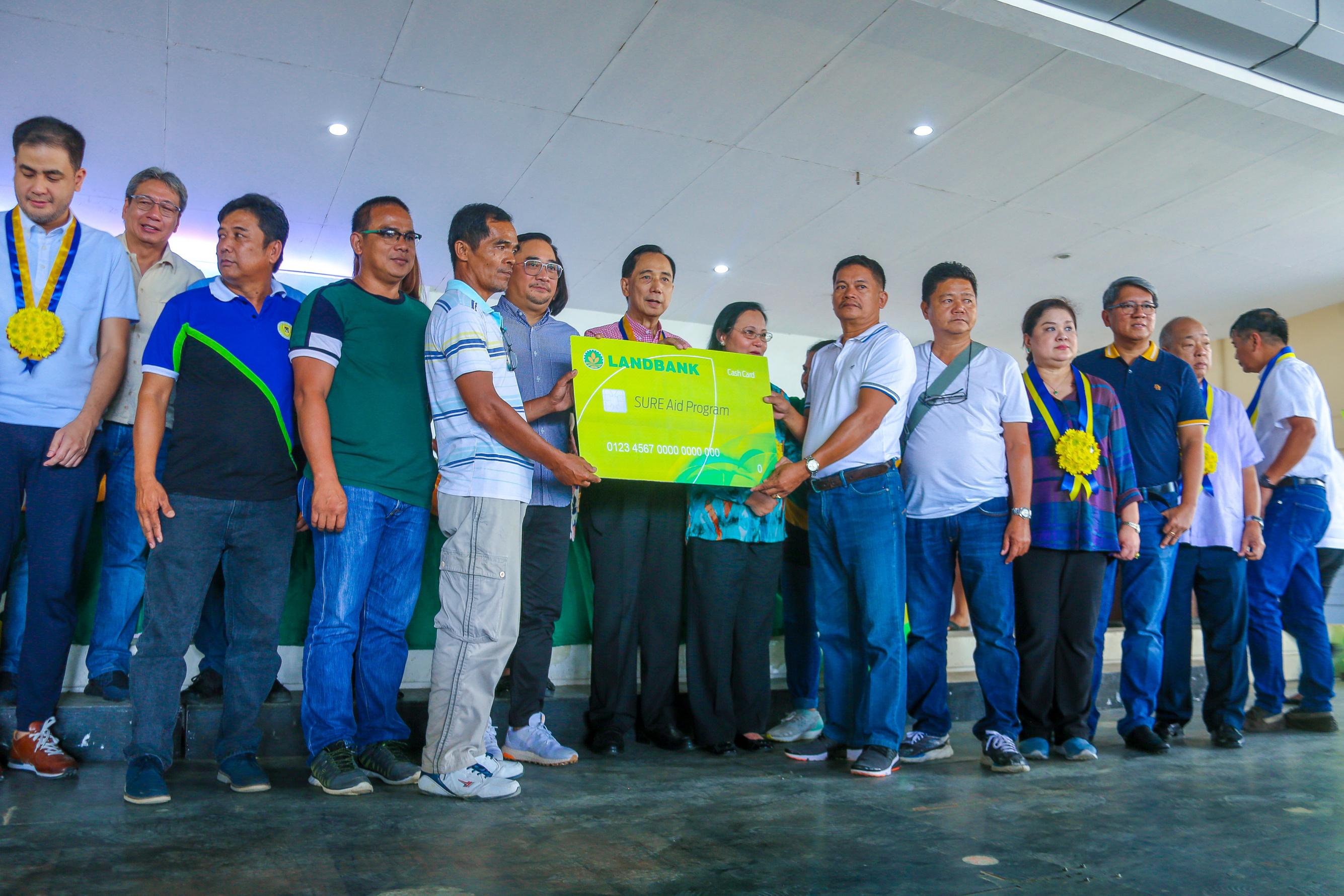
The DA also launched the Expanded Survival and Recovery Assistance Program for Rice Farmers or SURE Aid Program As of December 31, 2019, a total of 140,409 rice farmers have received their loans amounting to Php2 11 billion The program, which is administered by LBP, provides a one-time loan assistance of Php15,000 to rice farmers who are tilling one (1) hectare and below at 0% interest rate payable for eight (8) years In addition, the National Food Authority (NFA) will buy the produce of rice farmers who availed of loan under SURE Aid.
The enactment of the Rice Tariffication Law refocused the function of the NFA to palay procurement and rice buffer stocking The NFA has procured a total of 14,651,140 bags or 732,557 metric tons of palay which is 9,557 metric tons more than the target volume for the year The NFA was able to procure more palay due to the higher buying price at Php19.00/kg. The agency procured palay from local farmers nationwide, mostly from Central Luzon (22 4%), Southern Tagalog (18 8%) and Cagayan Valley (13 8%)
(in MT; as of December 31, 2019)
Source: NFA
The NFA aggressively engaged in palay procurement activities by opening more buying stations nationwide to cater to more farmers
The agency has a total of 301 stationary buying stations. Aside from these, there are 395 mobile buying stations strategically set up across the country to cater to farmers especially in far-flung areas The NFA deployed mobile buying stations in strategic areas in Ilocos Sur, Kalinga, Cagayan, Nueva Vizcaya, Batangas, Camarines Norte, Masbate, Sorsogon, Antique, Southern Leyte, Zamboanga City, Zamboanga del Sur, Pagadian, Ipil, Sibugay, Zamboanga del Norte, Dipolog, Agusan del Norte, Agusan del Sur, Surigao del Norte, Surigao del Sur, Misamis Oriental, Misamis
Occidental, Lanao del Norte, and Maguindanao
By the end of 2019, NFA maintained an inventory (excluding commercial and household stocks) of 10,279,424 bags or 513,971 metric tons (MT) of rice good to last for 15 77 days, based on the average daily national consumption requirement of 651,860 bags or 32,593 metric tons
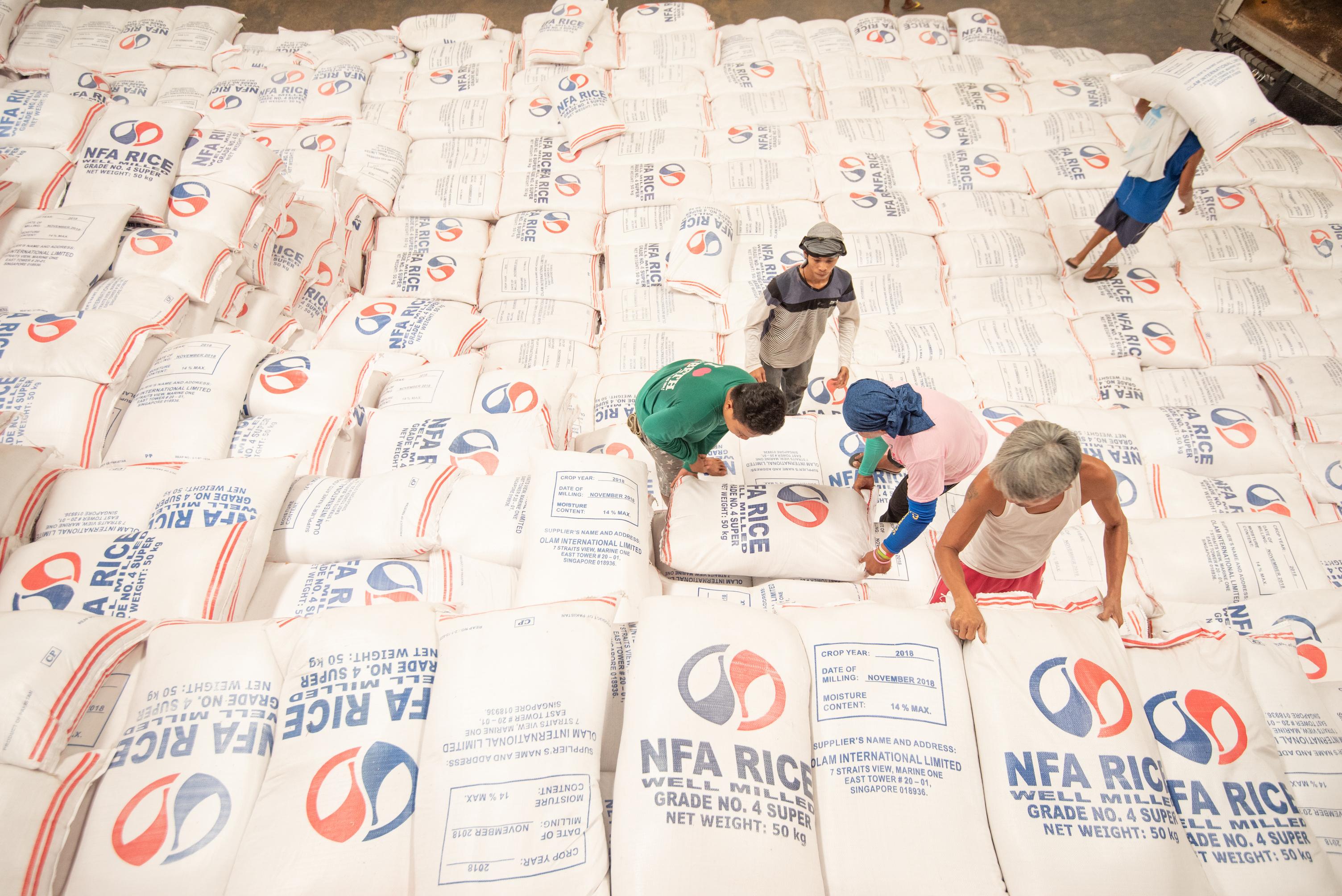
The Department, with the strong support and cooperation from LGUs and the private sector implemented the “1-7-10” protocol in ASF-affected areas and established 24/7 animal quarantine checkpoints to prevent the spread of the disease in other adjoining areas
In parallel, heightened biosecurity measures to prevent the entry of livestock and poultry diseases have been effected such as installation of new footbaths in major airports and seaports; culling of hogs in confirmed ASF-affected area within the onekilometer quarantine zone; imposing restrictions on the movement and transport of live animals, animal products, by-products and other related items; strict monitoring and surveillance to ensure that ASFinfected pigs are not slaughtered and ASF-tainted pork products do not reach the market; and massive information campaign for travelers requiring them to declare all goods purchased or acquired abroad and brought to the Philippines, among others
Moreover, the Department, through the Bureau of Animal Industry (BAI) and the National Meat Inspection Service (NMIS) continue to work closely with the Department of Health – Food and Drug Administration (DOH-FDA) to sustain the monitoring of all meat products and ensure that all food sold in the country are safe for human consumption The Food Safety Act of 2013 mandates that meat from diseased animals must not be used for food, or for manufacturing food products for human consumption
The "1-7-10" protocol is used in controlling the spread of any animal disease in an area known to have the disease infection By establishing specific outbreak zones, proper guidance is provided on the specific disease control actions to be carried out
1km radius: Quarantine Zone
is an area set to contain infection within 1 kilometer radius from the infected farm by limiting animal movement and employing mandatory test and destruction of all infected animals
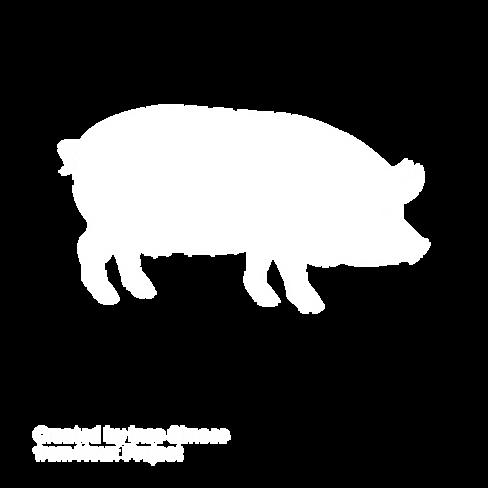
7km radius: Surveillance Zone
intended to detect the extent of the infection thru surveillance activities, disease reporting and limit the movement of live animals, animal products and by-products movement Every movement outside this zone needs the required documents such as veterinary health certificates and shipping permits
10km radius: Control Zone
intended to detect infection at an early stage through mandatory disease reporting
Moreover, the first modern and automated road bath disinfection facility in the Philippines for animal transport carrier vehicles was inaugurated on October 28, 2019 at the South Luzon Expressway (SLEX) extension - STAR Tollway biosecurity and quarantine checkpoint in Santo Tomas, Batangas The facility features built-in power sprays installed on both the ground and at both side vertical poles, resembling a car washer As estimated by the DA RFO in CALABARZON, 75% of the vehicles that are expected to pass through the pilot site are animal transport carriers A minimum of 12 automated road bath disinfection facilities will be installed in major entry and exit points in CALABARZON
 THE “1-7-10” PROTOCOL
THE “1-7-10” PROTOCOL
As of year-end, 73 cities and municipalities in eight (8) provinces and four (4) regions have been infected with ASF A total of 147,649 animals have been culled with the most number of culled animals coming from the provinces of Bulacan (44%), Pampanga (33%) and Nueva Ecija (7%) To compensate for the incurred losses due to culling activities, the DA provided indemnification to a total of 5,083 hog raisers in five (5) provinces amounting to Php212 million Of the released indemnification fund, 52% (Php110.8 million) was allotted for Bulacan, 22% (Php45 8 million) for Rizal and 18% (Php37 6 million) for Pampanga
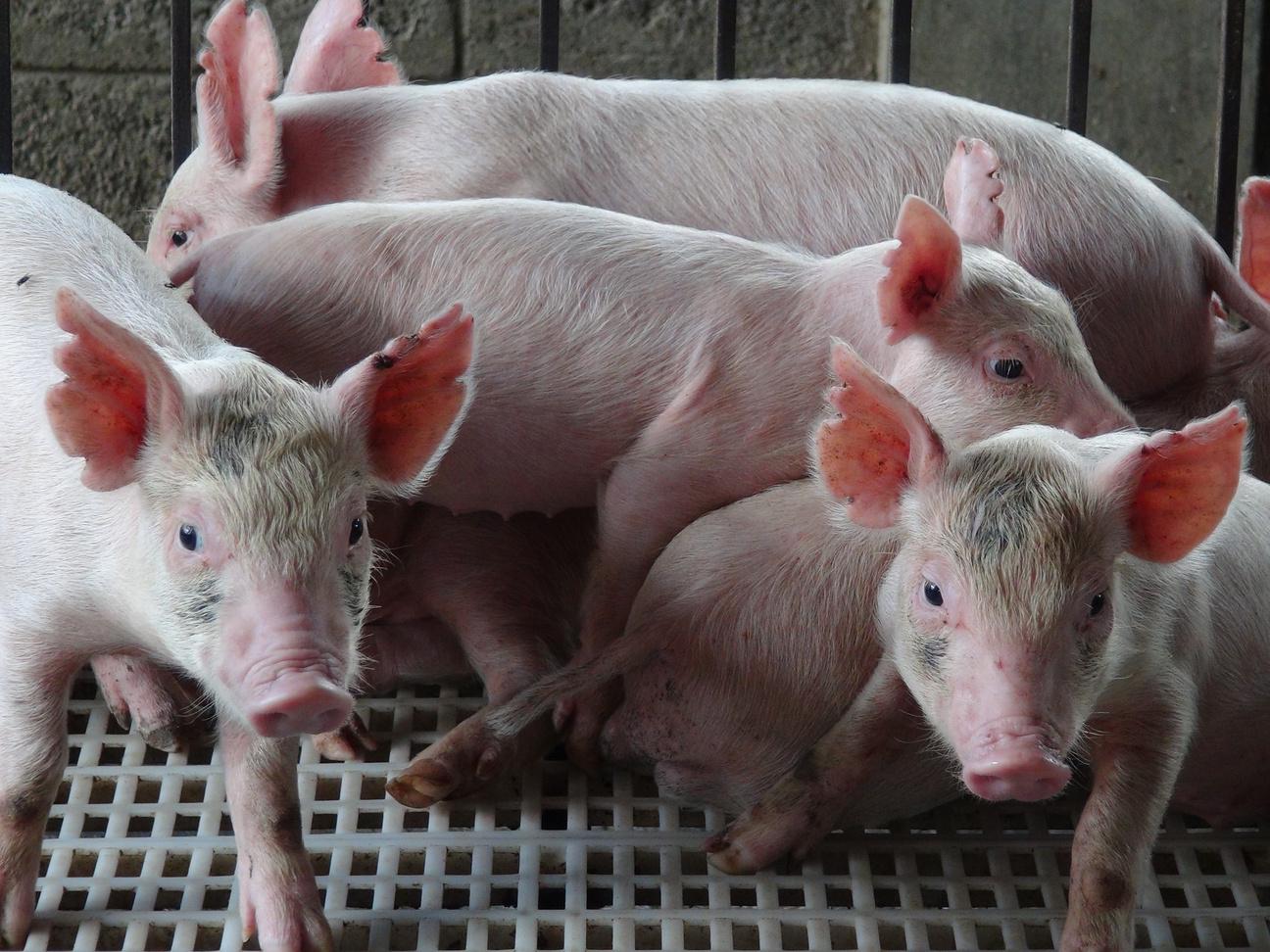



(as of December 2019)

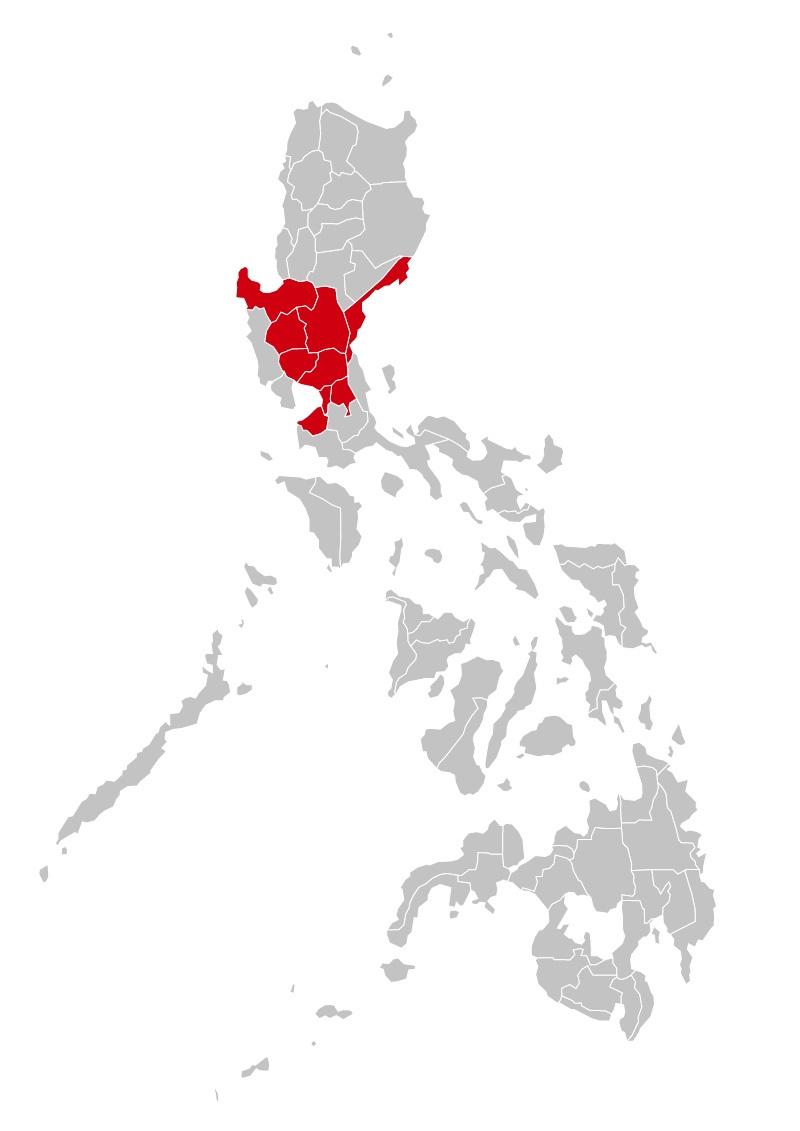 Aurora
Aurora
The Department recognizes that building multi-stakeholder partnerships and collaborations will play a pivotal role in transforming the country’s agriculture and food systems, and drive improvements in food security, environmental sustainability and economic opportunity at all levels
Hence, DA has been pursuing a policy of active participation and partnership with LGUs, the private sector and other stakeholders in the identification, development and promotions of agri-fishery products for both domestic and export markets
The “KAtuwang sa DIwa at GaWA para sa Masaganang Ani at Mataas na Kita” or KADIWA ni Ani at Kita Program is the flagship agri-fishery marketing program of the Department spearheaded by the Agribusiness and Marketing Assistance Service (AMAS).
In collaboration with LGUs and other institutions, both from the national government and the private sector, DA rolled out the KADIWA ni Ani at Kita platform which aims to establish and sustain additional markets for small farmers’ and fisherfolk produce/catch thereby increasing their access to direct buyers and respectively increase their income Moreover, the program also endeavors to provide urban households access to safe, fresh and quality agri-fishery products at affordable prices while ensuring stable prices and supply of food and other basic commodities to the consuming public particularly in urban poor areas The KADIWA ni Ani at Kita Program is implemented using the following schemes:





involves the partnership among DA, FCAs, LGUs and other institutions providing assistance to pre-identified groups like senior citizens, person with disabilities (PWD), solo parents, Pantawid Pamilyang Pilipino Program (4Ps) beneficiaries and the like Under this scheme, the LGU partners or institutions will directly buy the agri-fishery products from FCAs at competitive price for distribution to the preidentified beneficiaries instead of cash assistance

KADIWA Agri-Kart
under this scheme a partnership among DA, FCAs and business entities will be forged wherein KADIWA Agri-Kart will be established in strategic areas in malls, parks, recreation areas, etc The DA will provide the KADIWA Agri-Kart which will be manned by representatives from the FCAs for a given schedule All FCAs selected to participate in this platform will be given assistance like promotional materials, expert guidance and advisory services
KADIWA Market “Kadiwa ng Masa”
a regular venue, similar to market place, will be identified and set up wherein FCAs can sell their produce directly to consumers at competitive prices on a regular basis
KADIWA Outlet “Kadiwang Gawa ng Pamahalaan”
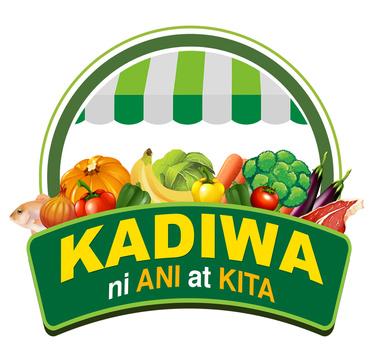




a scheme wherein the participating government agency will dedicate a strategic area within the vicinity of its office for the FCAs to sell their agricultural produce on a regular basis The participating government agency will provide the free use of the space and other utilities necessary for the operation of the outlet





The KADIWA ni Ani at Kita Program was launched on September 13, 2019 at the Food Terminal Incorporated (FTI) - Food Development Center in Taguig City where the Memorandum of Understanding (MOU) between DA, DILG, and FTI was also signed As of December 2019, the Department forged an MOU with the City Governments of Taguig and Pasig for the sustainable implementation of the program
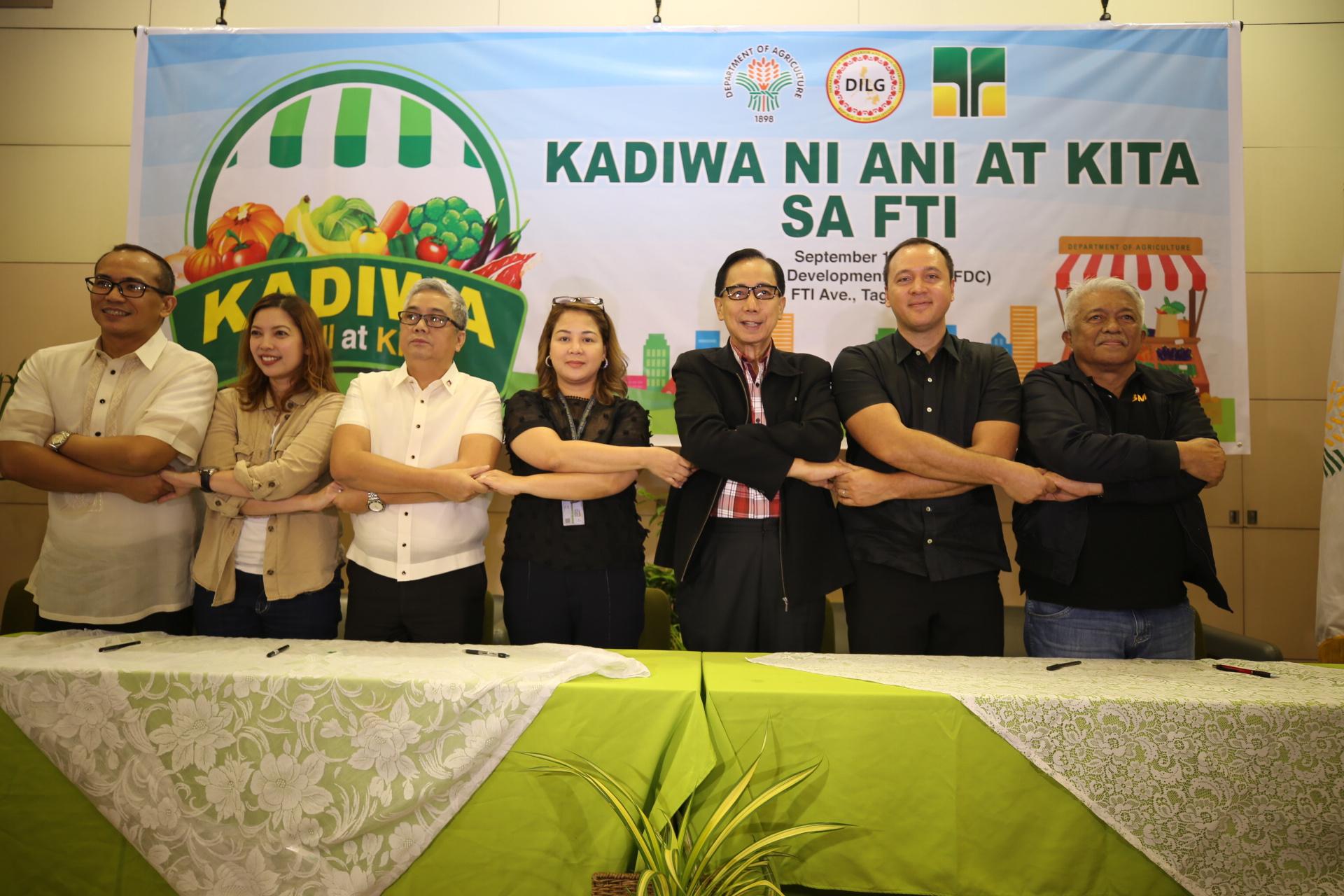
Moreover, Kadiwa ng Masa was launched in five (5) different locations in the NCR:
1 Food Terminal Incorporated (FTI) - Food Development Center, Taguig City
2 Manila City Hall Inner Court
3 Pasay City Sports Complex
4. Taguig City Lakeshore Hall
5 Karangalan People's Park, Manggahan, Pasig City
From September to December 2019, a total of 119 KADIWA ni Ani at Kita events were conducted, participated and assisted by DA nationwide which assisted 1,065 farmers, fisherfolk and micro, small and medium agri-based enterprises (MSMEs), with total gross sales of Php 9,271,021 25
Seeing the great potential of the platform, DA is working on launching rolling stores in the metro aside from the existing KADIWA ni Ani at Kita outlets established by DA in collaboration with LGUs
The DA has reaffirmed its partnership with the Department of Trade and Industry and the Philippine Chamber of Commerce and Industry to link small producers directly to urban and profitable markets This initiative is called Agribusiness Support for Promotion and Investment in Regional Expositions (ASPIRE).
The business matching activities under ASPIRE was able to successfully match nine (9) agri-fishery based companies with buyers that generated a total sale of Php7 17 million in 2019
Moreover, in 2019, a total of Php80 82-million worth of transactions were consummated between 78 producers and 49 buyers through the direct market linkage and market-matching initiatives of DA-AMAS and their regional counterparts in DA RFOs.
Launching of the “KADIWA ni Ani at Kita” on September 13, 2019 at the Food and Development Center, Taguig CityThe coordination with Philippine Atmospheric, Geophysical and Astronomical Services Administration (PAGASA) in the monitoring of impending calamities was strengthened in an effort to institutionalize better early warning systems and protocols within the Department With the use of forecasted track of tropical cyclones and the regular monitoring of current standing crops, possible impact and corresponding production damage and losses can be estimated by the DA-Disaster Risk Reduction and Management Operations Center (DRRM OpCen).


With this enhanced coordination, about Php12 billion worth of crops were saved from the havoc brought by Typhoon Tisoy in early December in several parts of Visayas and Luzon due to preparations made by the DA and LGUs prior to its landfall. These include Php11 6 billion worth of palay harvested from 157,000 hectares and Php109 million worth of corn harvested from 2,000 hectares
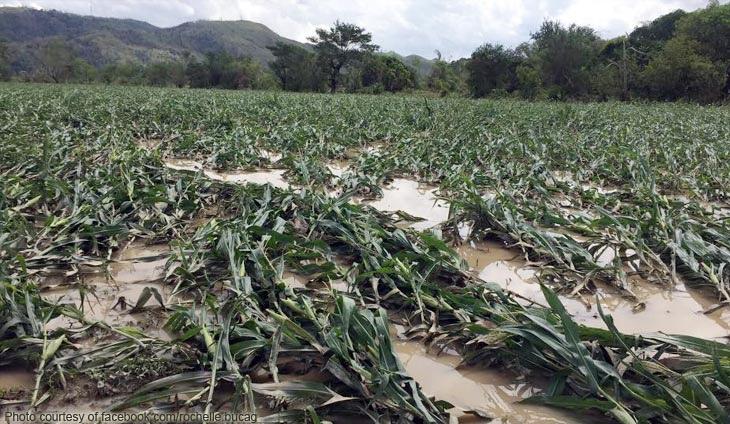
Moreover, DA regularly coordinates with PAGASA in monitoring signs of meteorological drought through their El Niño-Southern Oscillation (ENSO) Alert System The Department also adopted the Agricultural Stress Index System (ASIS)- Agricultural Drought Monitoring System by FAO to capture and monitor the vegetation health of agricultural areas
The Department, through the Field Operations Service (FOS), is also conducting routine monitoring of the growth stage of crops in agricultural areas using drones with Normalized Difference Vegetation Index (NDVI) Cameras Planting and harvesting reports are submitted every month by LGUs and DA RFOs, while data on standing crops are submitted on a bi-monthly basis The Philippine Rice Information System (PRISM), developed by PhilRice in coordination with IRRI, monitors the growth stages of crops using remote sensing and provides rice area estimates on a monthly basis
In instances where the adverse impacts of disasters were inevitable, the DA through its Quick Response Fund (QRF), provided immediate assistance to farmers and fishefolk adversely affected by natural or human-induced calamities, epidemics, crises and catastrophes to help them restore livelihood activities and get back to normal living conditions as quickly as possible
In 2019, the Department assisted about 295,000 farmers and fisherfolk affected by nine (9) calamities/disasters which include typhoons, El Niño, earthquake, pest infestation and disease outbreak A total of Php1 8 billion under the Department’s QRF was used to provide seeds, planting materials, fertilizers, livestock, drugs and biologics, feed supplements, and rehabilitation of damaged irrigation facilities such as small water impounding projects (SWIP) and diversion dams, among others
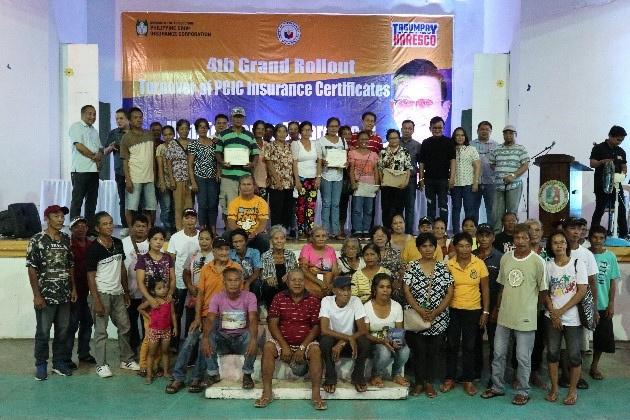
Every year, natural disasters, and pests and diseases challenge agricultural production For an agricultural country like the Philippines which is also considered as one of the most disaster-prone countries in the world, agricultural insurance is of great importance The Philippine Crop Insurance Corporation (PCIC), as the government’s lead agricultural insurer, has always been a dependable partner in protecting farmers and fisherfolk from production losses due to calamities and pest infestations
In 2019, the Philippine Crop Insu Corporation (PCIC) has provided agric insurance protection to 3,059,565 fa and fisherfolk with a total insurance cov amounting to Php109 89 billion The in area for crops totaled 2 321 million hec Compared to 2018 data, insured rice and high value crop farms expand coverage by 25%, 44%, and 11%, respect
The PCIC also paid Php4 188 billi indemnity to 570,240 claimants Of over 95% were rice and corn farmers causes of damage sustained by farmer fishers were flooding and intense rai wind due to Typhoons Liway, Nimfa, Ramon and Tisoy; drought; as well as and diseases
The development and availability of easy access and affordable credit programs for key stakeholders is one of the basic foundations for a sound A&F sector. In line with this, various loan programs are currently being implemented by the ACPC that aims to empower marginalized and small farmers and fisherfolk by providing them fast, convenient and affordable credit programs One of which is the SURE Loan Assistance Program
SURE is the umbrella post-disaster and recovery loan facility implemented by the ACPC It intends to provide funding for the immediate rehabilitation and restoration of agricultural and livelihood activities of marginal small farmers and fishers (MSFF) and micro and small enterprises (MSEs) affected by typhoons, flooding and other natural disasters
Through the years, SURE has developed and transfigured into several schemes in order to be more responsive and fitting to the needs of MSFF and MSEs affected by various disasters, and hasten their recovery process The following are the accomplishments of SURE programs in 2019:
A total of Php239 6 million in loans were granted to 20,367 MSFF borrowers Through SURE, small farmers and fisherfolk affected by disasters (from areas declared under state of calamity) may avail of financing assistance up to Php25,000 00 per borrower at 0% interest rate Repayment is up to three (3) years, based on the capacity to pay
A total of Php4 9 million in loans were granted to 201 hog raisers who were adversely affected by the ASF outbreak Under the program, backyard hog raisers from areas identified by DA-RFOs as affected by ASF, may avail of Php3,000 per culled hog or up to a maximum of Php30,000 per borrower SURE Hogs is being implemented through existing ACPC partner lending conduits, at 0% interest, with no collateral, and is payable up to three (3) years.

The Department continued to pursue strategic partnerships, collaborations and representations in the international community in order to advance the interest of Filipino farmers and fisherfolk through bilateral and multilateral negotiations, and memberships in regional and international organizations for agri-fishery technology and knowledge exchange
On the international front, DA recently signed two Memoranda of Understanding (MOU) reaffirming PHKorea partnership to bolster cooperation on agricultural mechanization and fisheries, during the visit of President Rodrigo Duterte to the Republic of Korea
Under the MOU on mechanization, DA will collaborate with the Korea Agricultural Machinery Cooperative (KAMICO) on R&D, capacity enhancement, and the establishment of agri-machinery manufacturing complex in the Philippines Meanwhile, the MOU on fisheries, which is the first ever in history, will promote scientific and technical, economic, and trade cooperation in fisheries and aquaculture with Korea’s Ministry of Fisheries
During the visit, DA also met with Vice Minister Lee Jae-Ouk of the Korean Ministry of Agriculture, Food and Rural Affairs and agreed to fast track discussions on specific issues, including negotiations for the reduction of tariff lines for agricultural commodities from both countries The ongoing negotiations for the PH-Korea Free Trade Agreement (FTA) is set to be concluded in the first half of 2020

The Philippines, through DA, recently signed an MOU with the People’s Republic of China, represented by Minister Xiao Yaqin of the State Administration for Market Regulation, on food safety cooperation.
Under the MOU, both countries will exchange information and experience in areas that include laws and regulations, standards, policies, procedures and technologies to address specific food safety issues including but not limited to regulatory law enforcement, sampling and monitoring, risk management, emergency response and food recalls It also aims to strengthen and expand bilateral cooperation in the areas of food production and processing, policy, regulation and processes
The Department also welcomed the commitment of India to pursue strategic cooperation with the Philippines and the rest of ASEAN in agriculture and allied sectors by sharing knowledge and expertise and provide hand-holding with its developed technologies.
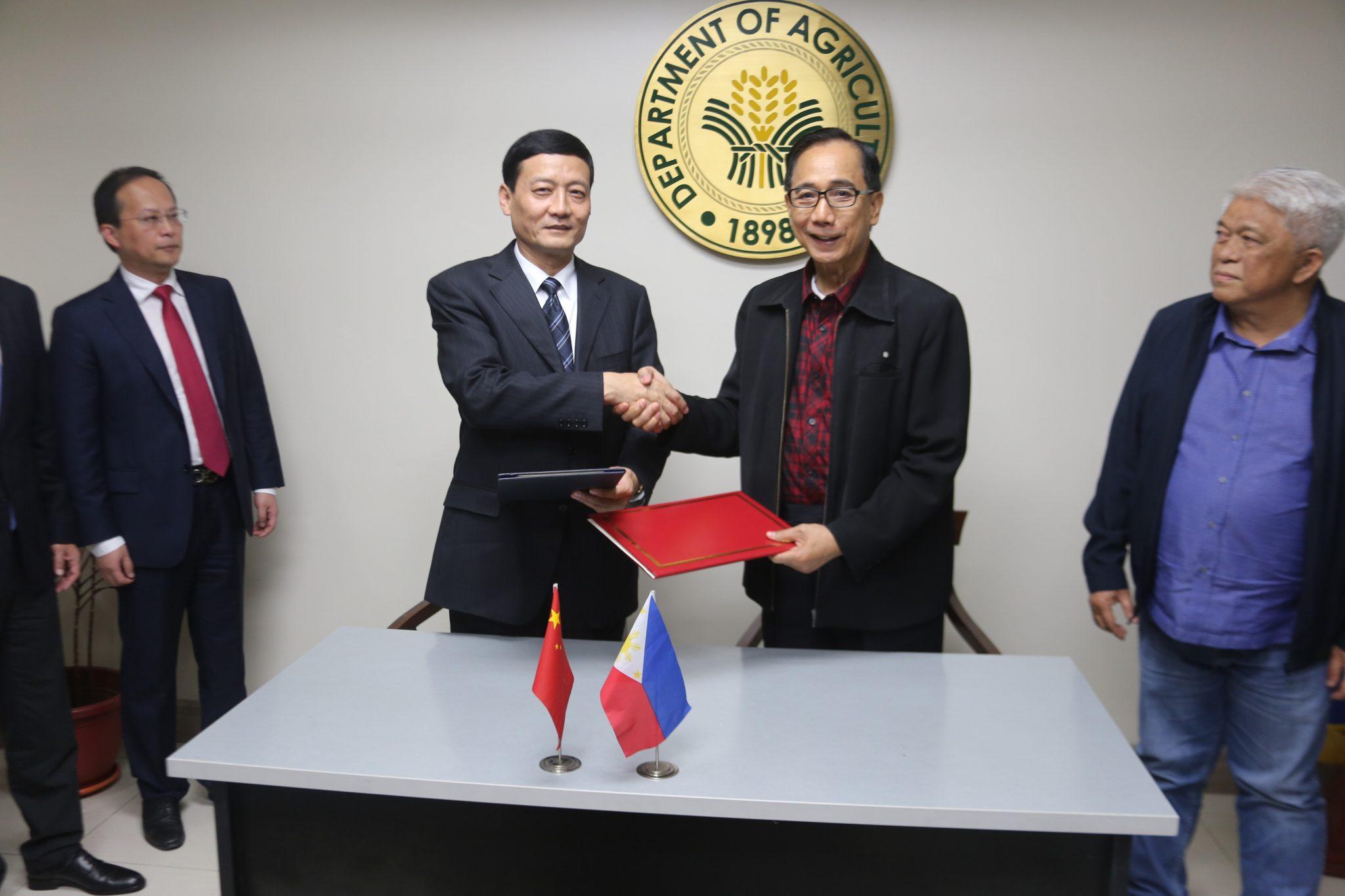
During the 5th ASEAN-India Ministerial Meeting on Agriculture and Forestry (AIMMAF) on October 16, 2019 in Brunei Darussalam, Indian Minister of State for Agriculture and Farmers Welfare Shri Kailash Choudhary emphasized the importance of enabling climate resilience in agriculture as one of its priorities for technical cooperation
Aside from the aforementioned, the DA also successfully facilitated bilateral cooperation initiatives and activities such as: (1) Signing of the MOU between the Philippine DA and Enterprise Singapore on Agricultural Cooperation; (2) Extension of the Philippines-Vietnam MOA on the Supply of Vietnamese Rice to the Philippines; (3) Signing of Implementing Arrangement between Philippine and Israel which paved the way for the construction of model units of solar-powered irrigation systems in Laguna; and (4) 8th USPhilippines Bilateral Strategic Dialogue which initiated the cooperation between the DA Crop Biotechnology Center and US Agriculture Research Service on exchange of genetic materials, among others.

Now more than ever, it has become increasingly evident that the role of agriculture in economic development has undergone an important evolution The DA understands that one precondition to transform Philippine agriculture is to maximize opportunities in the global agricultural marketplace by actively pursuing strategic multilateral or bilateral trade negotiations with the interest and welfare of local producers at the forefront
Aside from agri-fishery trade cooperation, partnerships on technology development and transfer through research and capacity building strengthen the foundations of Philippine agriculture and allow the country to participate in the global agricultural marketplace on an equal footing


Significant progress has already been made but serious gains remain to be realized Operationalizing the tenets
of the 'new thinking’ for agriculture through the mainstreaming of the eight (8) paradigms has resulted in the reorientation of existing and introduction of new policies, strategies and programs that changed and will continue to shape the Philippine agricultural landscape
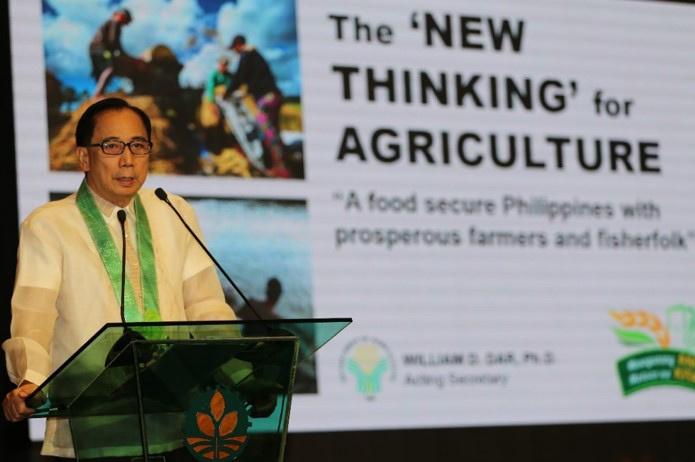
While it is true that these solutions and strategies are nothing new especially to experts in the A&F sector, but how these pieces were coherently tied up and upscaled is what will help deliver better and sustained results
The Department plans to capitalize on this strong start and use it as a springboard for the full-blown operationalization of the eight (8) paradigms.
Under this paradigm, support will be intensified for the increased use of science-based farming and good agriculture practices and promotion of better access to technology in the production, processing, and handling of agriculture and fisheries produce
The opportunity to instill the concept or paradigm to modernize the country’s agriculture sector is also presented in RA 11203 that establishes the Php10 billion RCEF that would be invested for farm mechanization, provision of high-yielding seeds, credit support, and training of rice farmers
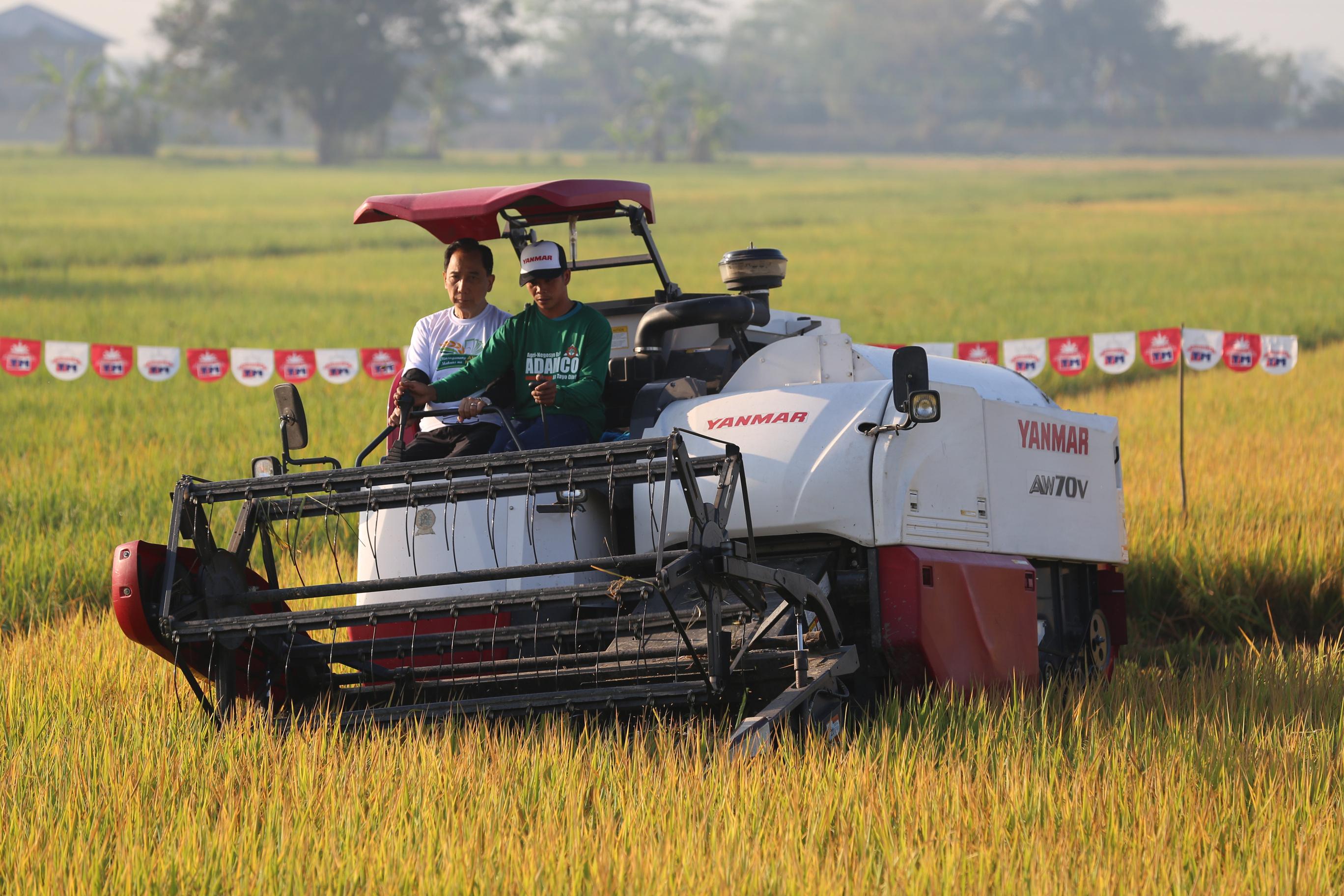
However, the use of modern technology like balance nutrient management and others must also cover other crops, particularly those with export potential in processed or value-added form like coffee, cacao, cassava, tropical fruits, rubber, among others About 80% of the country’s farmlands are devoted only to rice, corn and coconut There is a need to diversify crop production in the Philippines and pour in more investments for the development of other high-value crops
Programs and policies that will attract and engage more of the youth into the A&F sector are a must as the average age of farmers in the country is already 56 to 60 years old Their entry into the sector, especially as agripreneurs and infomediaries, would be instrumental in modernizing Philippine agriculture
Lastly, agripreneurship should also form part of the modernization paradigm acknowledging that the A&F sector is inherently linked to other sectors of the economy
Agriculture must be treated as an industry, with the objective of industrializing the value chain of every agricultural commodity while assuring smallholders get a fair share from the fruits of their labor The industrialization paradigm advocates for the adoption of more efficient division of labor, use of technological innovation to solve problems, promotion of entrepreneurship and enhanced financial management, and the use of enhanced farm management organization This will be realized using “bigbrother-small-brother partnerships” between farmer groups and the private sector as key to elevate productivity in the agriculture sector
Aside from increasing productivity, opportunities to generate income through value adding, processing, manufacturing and developing markets for both raw and processed agricultural products are optimized which will be key in doubling the income of farmers and fisherfolk
The DA through its various agencies must proactively engage the private sector and LGUs in a big way in setting up more agri-based industries and developing sustainable markets for agri-fishery products
Linking small farmers and fisherfolk organizations with large agri-industrial firms and conglomerates in the country through mutually beneficial contract farming agreements would also be critical in the path towards agri-industrialization More agribusiness opportunities in sourcing and selling inputs, coordination of farm logistics and transport, and marketing of produce for local and export markets will open for smallholder farmers and fisherfolk
The use of digital technologies that can be adopted and upscaled for Philippine agriculture such as data analytics, artificial intelligence, computerization, Internet of Things, geo-mapping and the use of drones will be maximized
The industrialization paradigm also seeks to establish a Provincial Agriculture and Fisheries Extension System (PAFES) to improve the extension service delivery in the A&F sector The province is a strategic platform to lodge the AFE function from an economies of scale standpoint, not to mention the fact that PLGUs can better provide sustained annual budgets to improve the livelihood of small farmers and fisherfolk This is also to better capitalize on their rich knowledge of local situations and realities, hence, enabling them to better address the needs and challenges of small farmers and fisherfolk in their localities
Lastly, more investments on income- and market-oriented agricultural research for development (R4D) must be made by the government, with SUCs getting more involved. Government research institutions and SUCs together with industry and private sector partners must forge collaborations for agricultural R4D, so research outputs would have real-world application in the A&F sector.
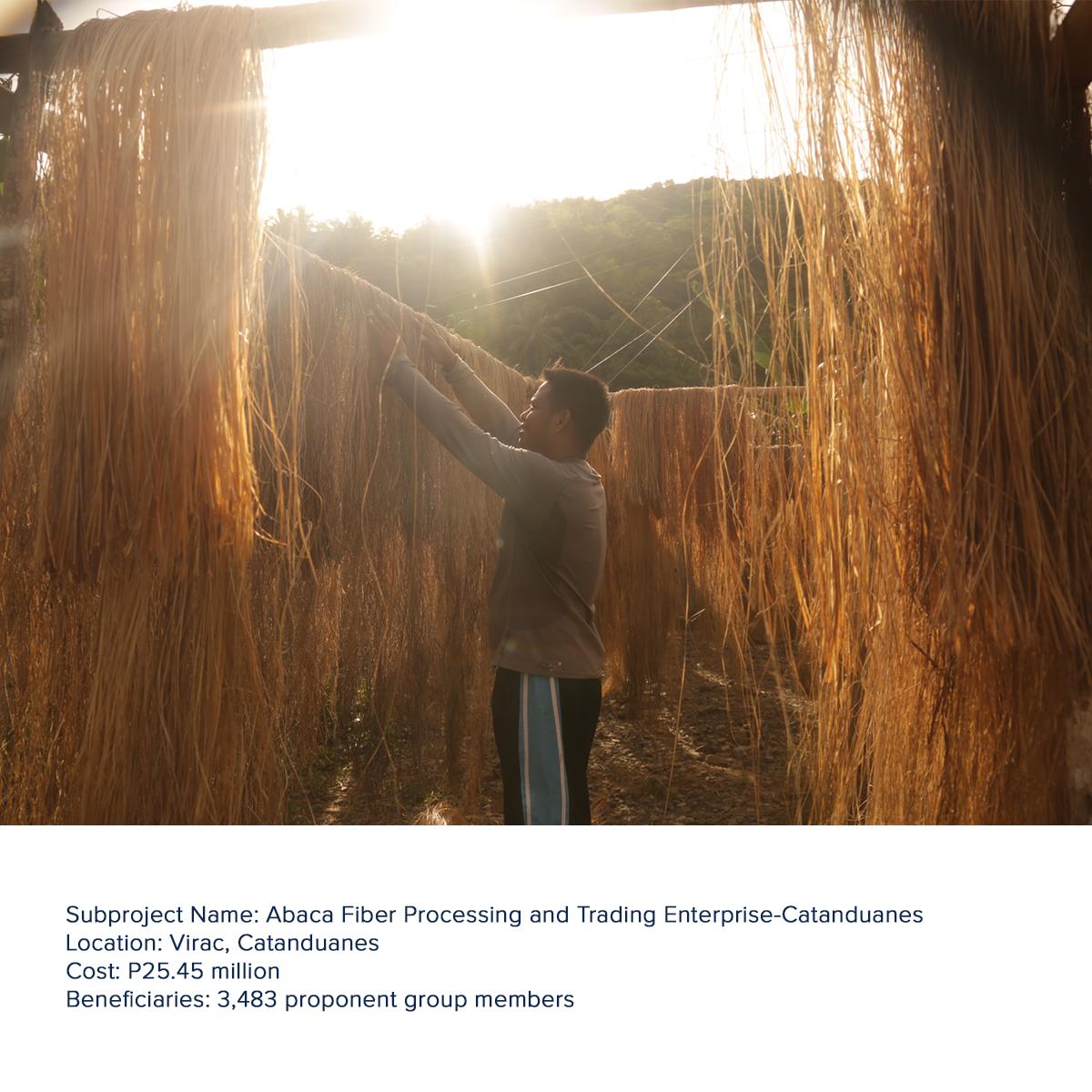
The promotion of agricultural products in the domestic and foreign export markets and improving access to these markets are effective catalysts in doubling the incomes of farmers and fisherfolk Under this paradigm, a systematic and long-term strategy in developing and promoting exports of raw and processed agricultural products should be prioritized The sector’s export strategy should not be dependent on local surplus production. Rather, economies of scale should be achieved in on-farm production that would generate a sustained quantity and quality of export products
Towards this end, efforts to raise the level of competitiveness of the A&F sector must be pursued such as ensuring the adoption of higher standards on the quality of produce, among others With the government leading the way and providing a conducive policy environment for export promotion and development, the private sector’s role would be essential especially in establishing and seeking markets abroad and in expanding the country’s agricultural export portfolio
According to the PSA, the average size of farms in the Philippines has continually shrank from almost three (3) hectares per family/holding in the 1980s to 0 9 hectare as of 2012 while the vast majority of the country’s fishers remain tied to very small boats In addition, majority of the country’s 10 million farmers, fishers and agricultural workers are still engaged in informal, atomistic, traditional, and subsistence production
The use of outdated production practices coupled with lack of access to credit and capital as well as modern farming and fishery methods and technologies resulted in perennially low levels of productivity and income

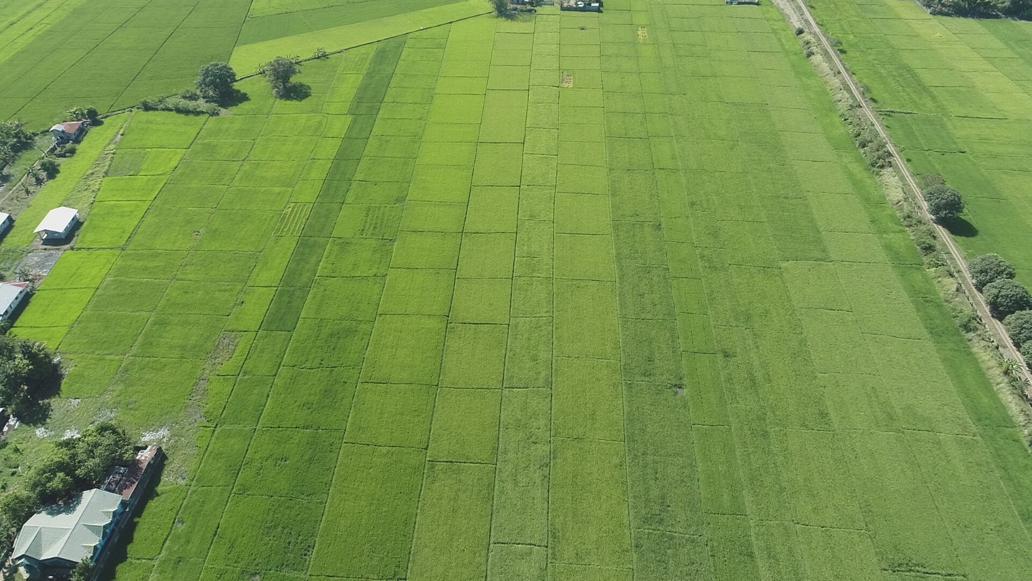
Farm and fisheries clustering and consolidation has been recognized as an effective strategy in increasing production levels and income, and ensuring better access to resources, technologies and markets with notable success stories in many countries such as South Korea, Israel, Japan, Malaysia, Indonesia, Netherlands, Finland, Chile, Colombia, Thailand, India, China and Vietnam, among others
In order to maximize the potential contributions of these arrangements towards agri-fishery development as evidenced by the success stories of other countries, the DA is fast-tracking the development and roll out of a formal, comprehensive and holistic government initiative and assistance program on farm and fisheries clustering and consolidation to be implemented at the national level.
The Department seeks to mobilize policy action, generate technical and financial resources, and galvanize public and private sector support towards farm and fishery clustering and consolidation as its core development strategy to: (1) bring about economies of scale in Philippine agri-fishery production, (2) ensure better access to markets, financing and investments for crops, livestock and fisheries ventures and development projects, (3) strengthen the active role and contribution of farmers and fishers to the economy, and (4) accelerate agriculture growth and countryside development
4. Consolidation of small- and medium-sized farmsMoreover, these arrangements would also enable the farmers and their partners to establish agribusiness ventures With higher and better quality production, linking agriculture to the domestic and global manufacturing sectors and accessing markets become easier
Farm and fisheries clustering and consolidation is also crucial in achieving collective action as it would make it easier for government and private entities to deal or transact with organized farmers These schemes are also encouraged in the Agriculture and Fisheries Modernization Act of 1997 (RA No 8435) in order to benefit from economies of scale, afford a stronger negotiating position, and pursue more focused, efficient and appropriate research and development efforts This would also help link more farmers to the agro-industrial sector
The development of infrastructure and common service facilities, including better farm machineries, postharvest equipment, processing and packaging facilities and ICT-based technologies that will redound to manpower and cost savings and lead to higher margins for the farmers is at the core of the infrastructure development paradigm
Infrastructure development would be critical so agricultural areas in the countryside could be utilized more and improve their linkages to the urban/domestic and export markets Thus, a “Build, Build, Build”program is also a must for agriculture

There is also a need to engage the private sector through public-private partnerships (PPP) and jointventure schemes to accelerate the development and expansion of national irrigation systems which should also cover high-value commercial crops
Furthermore, food terminal markets in strategic areas including facilities for post-harvest handling, packaging, and related facilities, including farm-to-market roads, to enhance agri-industrialization should be constructed in the rural areas
The twenty-year (2000-2019) average share of agriculture in the national government expenditure is only 4 3%, as reported by PSA The Department shall work for higher budgetary support and encourage more private investments in Philippine agriculture and fisheries.
Guided by commodity roadmaps, the government and the private sector must jointly funnel resources into the sector to unlock the bigger potential contribution of agriculture and agribusiness to the economy, including more employment opportunities
With DA taking the lead, the lobbying for improved agricultural orientation of government expenditures will be intensified to fund new ideas and new programs and projects that are needed to innovate Philippine agriculture

The DA shall continue to seek legislative support at the national and local levels, and partner with policymakers and other agencies in initiating and sustaining reforms that will promote faster growth and overall competitiveness for the A&F sector
With the above outlined strategies and directions, the sector shall seek the support of both the Senate and the House of Representatives for the legislation and institutionalization of needed policy and structural reforms in support to agricultural and rural development
More pro-poor laws are also needed, in line with RA 11321 or the “Sagip Saka Act” and RA 11203 or the RTL The “Sagip Saka Act” establishes the Farmers and Fisherfolk Enterprise Development Program that provides a comprehensive set of objectives, targets, and holistic approach in promoting the establishment of enterprises involving agricultural and fishery products Meanwhile, the RTL created the RCEF and legislates the allocation of Php10 billion annually for six (6) years to fund programs and projects to modernize the country’s rice industry.
In Million pesos Source: PSAWith the ultimate aim of doubling the income of small farmers and fisherfolk, commodity roadmaps must be formulated and implemented with the following goals: increased productivity, profitability, competitiveness, sustainability and resilience These must be developed using a highly participatory and consultative process involving farmers, fisherfolk and key industry stakeholders to assure that the roadmap would also result in inclusive growth, or the wider and equitable distribution of the fruits of economic growth and prosperity
Roadmaps must employ the value chain approach and provide doable and comprehensive courses of actions for each segment in the value chain These will provide a more holistic and coherent basis for the formulation, updating and expansion of the Department’s policy and program initiatives.
The Administrative Order (AO) No 16 issued in 2019 establishes the Department-wide policy framework for the new vision of "a food-secure Philippines with prosperous farmers and fishers ” This will guide the various operating units of the Department moving forward in the formulation and implementation of all policies, plans, programs, projects and regulations towards the development of the sector and ensure its responsiveness to the identified priority concerns under the “new thinking” for agriculture The salient components of the DA FY 2020 Annual Plan anchored on the eight (8) paradigms are presented in Annex 1

As we usher in a new era for Philippine agriculture and with the new leadership at the forefront, these new paradigms serve as pillars that will be instrumental for the Department in order to live up to its moral obligation to provide affordable and available food for the Filipino people and ultimately, propel the A&F sector to unprecedented growth
The Department acknowledges the daunting task ahead and in order to succeed, it needs all the help that it can get. One imperative to the successful operationalization of the ‘new thinking’ for agriculture is collective action The Department will simultaneously work on setting up better and more inclusive platforms and mechanisms for multi-stakeholder engagement, transparency and accountability as it leads the sector in laying a new strategic pathway This is one way of ensuring that we develop more robust programs that provide more relevant interventions for our farmers and fisherfolk as well as improve the delivery mechanisms and broaden the scope of DA interventions
This paradigm shift bolsters the Department’s bid to significantly contribute to inclusive and more equitable growth by doubling the income of farmers and fisherfolk which can have transcending effects to the socio-economic landscape of Philippine agriculture and the nation as a whole.
(As approved in the FY 2020 GAA)
For 2020, a Php79 9-billion budget was approved for the Department in the General Appropriations Act (GAA) including the allocation for attached corporations This budget puts forth measures designed to encourage small business initiative, facilitate credit, increase productivity and stimulate economic progress and prosperity in the countryside Below are the salient programs, projects and activities (PPAs) in the FY 2020 GAA that reinforces the ‘new thinking’ for agriculture



Ensure sustainable use and management of soil resources and enhanced productivity; Enhance capacities and efficiencies of soil laboratories; establishment of mobile soils laboratories; and Provide site-specific nutrient recommendations.
Rainwater Harvesting Irrigation Systems



Increase cropping intensity, rice productivity, farm income, and employment; and Provide irrigation security during drought.
Sustainable Agriculture and Improved Farming Systems in Upland Communities for Indigenous Peoples, Kabuhayan at Kaunlaran ng Kababayang Katutubo (4Ks) Project
Develop Ancestral Agricultural Lands in order to improve productivity, profitability, and resiliency; Develop among them sustainable agricultural enterprises; and Improve income of IP families.
2. Agribusiness and Marketing


Establishment of Agribusiness Incubation Program
Strengthen university and research-based agribusiness incubators; and Establish linkage and partnership between farmers and fisherfolk (FFEs) and private sector.
Kadiwa ni ANI at KITA Program
Make food accessible to vulnerable communities; and Provide seed capital to barangay-based entrepreneurs/organizations (or its equivalent) through the LGU Enterprise Development Office or its equivalent for direct selling of basic necessities and prime commodities to consumer.

Agripreneurship Program

Develop the farm families through ladderized approach of learning and series of interventions.
Inclusive Agribusiness Program
Establish agro-industrial hubs in identified geographic agro-industrial zones.
Establishment of Sagip-Saka Coordination Center
Establish a coordination center, in support to the Sagip Saka Act, to facilitate the formulation, coordination and implementation of farmers and fisherfolk enterprises and building of entrepreneurship culture among farmers and fisherfolk.
Youth Farmers Challenge Fund
Entice the youth to engage in agriculture; and Encourage youth to develop and pursue business ideas to viable business ventures in farming and/or agrofishery processing.
Young Farmers Program


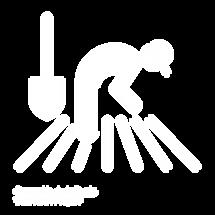
Promote agriculture and “Agri-preneurship” to the youth; Showcase and train on new age agricultural technologies and methods; and Provide "agricultural start-up kit" to trained participants.
Expanding Agri-Extension support to Provincial LGUs (Development and Implementation of Province-led Agricultural and Fisheries Extension Program per Province)
Adopt “One Province, One System” agricultural extension approach; Establish PAFECs; and Implement Province-led Agriculture and Fisheries Extension Program.




Expansion of the Corn-based Farmer-Scientist RDE Training Program
Develop the technical and scientific capabilities of the farmer specifically those in the upland communities to grow corn, vegetables and other crops utilizing appropriate farming technologies; and Strengthen the agricultural research and extension capabilities of local government units and state colleges and universities so they can render better services in their areas of responsibilities
Livestock Extension Program
Enhance the role and contribution of livestock and poultry in increasing income of smallhold farmers, support dairy trainings initiatives, train and develop government workers, farmers, and stakeholders on animal health emergency management and animal production.

Updating of the Registry System of Basic Sectors in Agriculture (RSBSA)
Enhance and update farmers and fisherfolk database; Develop a farm lot database system that is linked to the farmers’ record in the farmers' database; and Develop an intervention monitoring system for DA.


Facilities for the First Border Inspection in Five Major International Ports (Manila, Bataan, Batangas, Cebu and Davao)
Improve veterinary quarantine inspection procedures of animal products at border entry.
Provide direct cash transfers to eligible smallholder rice farmers; Facilitate the access of rice farmers to timely funds for the procurement of needed farm inputs; and Enhance farmers’ opportunity to improve productivity and profitability.
National Food Security Awards
Encourage and entice the Provincial Local Government Units (LGUs) to actively participate and sustain the action plans crafted; and Recognize the best managed provinces in terms of supporting and developing their respective areas to increase the productivity and income of Filipino farmers and fisherfolk.


